Back to the Future: Easter Eggs, Hidden Meanings, and Updates
Robert Zemeckis’ 1985 time travel comedy has been at the top of the best ever movie lists for a long time, and it’s a definite head runner when it comes to ‘80s films. The actors are perfect in their roles (especially Michael J. Fox and Christopher Lloyd as Marty McFly and Doc Brown). The script makes expert use of the plant-and-payoff screenwriting technique, and the clever directing makes a dense plotline feel light and fun.
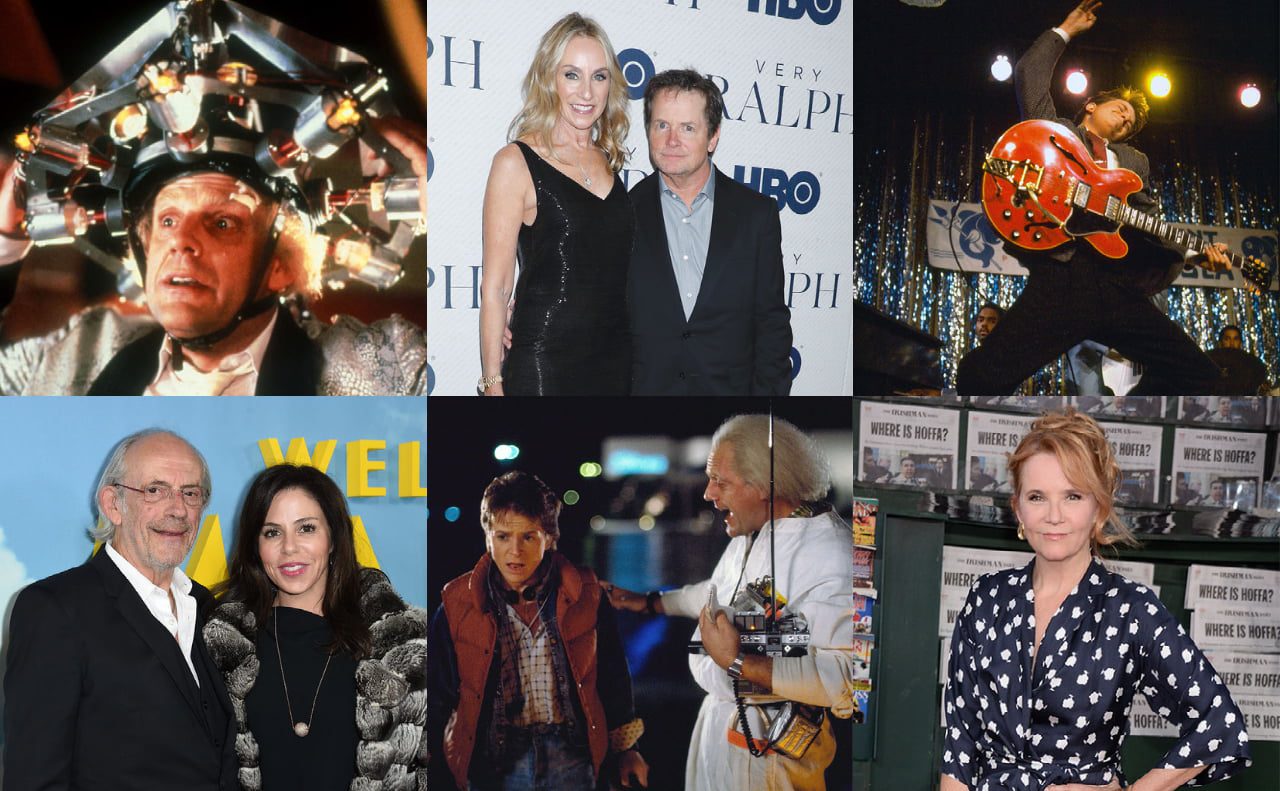
Despite the fact that it became an instant hit (and you’ll see why), Back to the Future’s journey to the big screen was a slow-moving process. But slow and steady wins the race, right? And this movie definitely won not only an Academy Award but several nominations. Let’s take a look behind the scenes because… well, why the heck not?!
Thanks to Dad’s Yearbook
Screenwriter Bob Gale was between projects when he found himself one day thumbing through his dad’s high school yearbook. An idea suddenly hit him: What if he were in high school with his own dad? He simply couldn’t stop thinking about the concept, and he went down this rabbit hole. Gale started to wonder if he and his father would even be friends if they were teenagers at school at the same time.
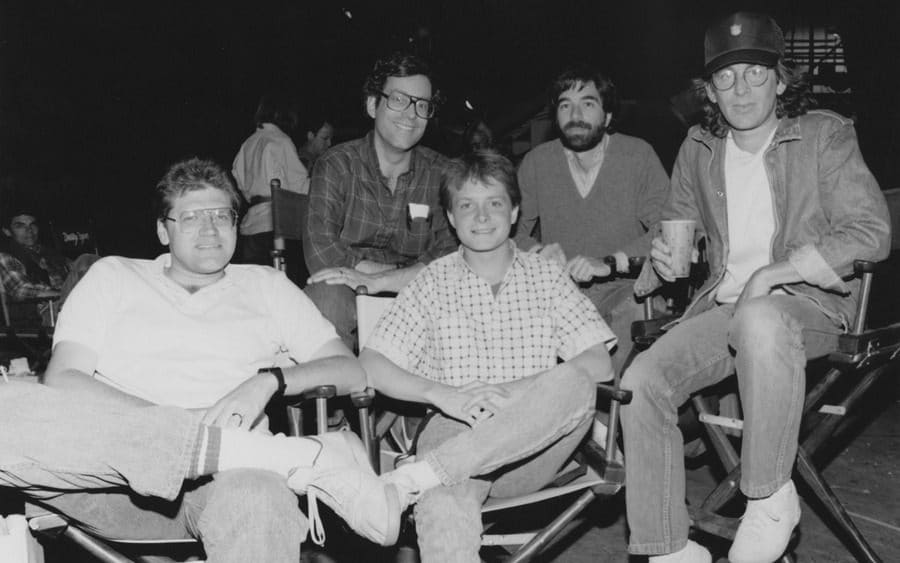
Gale figured to himself that he would only really be able to know the answer for sure if he were to go back in time and see for himself. This, of course, led him to the concept that would eventually become Back to the Future.
A Funny Idea Worth Checking Out
“How can there not be a ton of humor in the idea of going to high school with your parents?!” Gale said in an interview. The screenwriter has since maintained that doing just that – traveling back to his dad’s high school – would be exactly what he would do if he actually had access to a time machine.
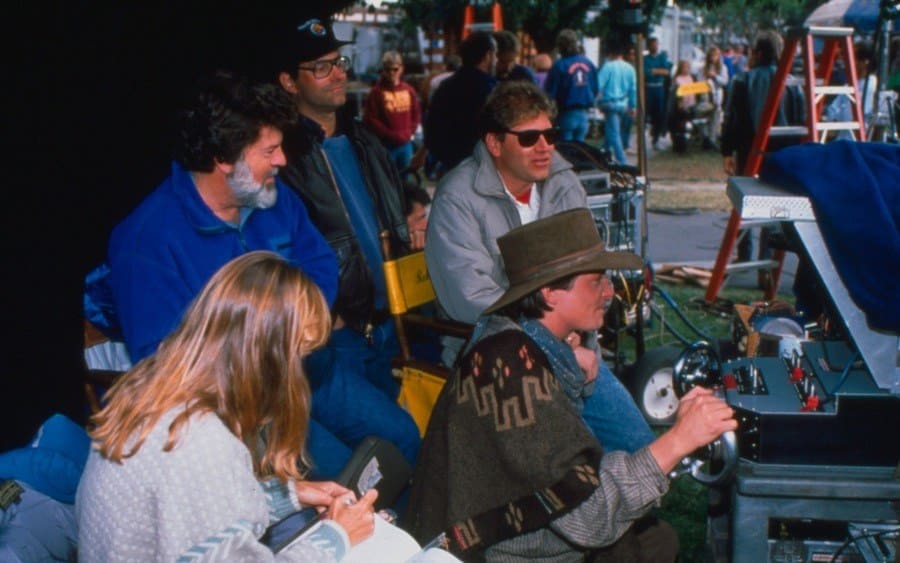
Both Gale and Zemeckis loved the concept for the potential film, but, as it turns out, they were pretty much the only ones. After writing the entire script, they shopped it around to film studios, almost expecting a bidding war. But that was far from what happened.
44 Rejections and They Still Kept Going
Today, it’s hard to imagine any producer or studio executive receiving the screenplay for Back to the Future and not eagerly wanting to make it, considering the classic it has become. But when Zemeckis and Gale first sent out the script, it was rejected a total of 44 times. Nearly every major studio wanted nothing to do with it, calling it “too family-friendly.”
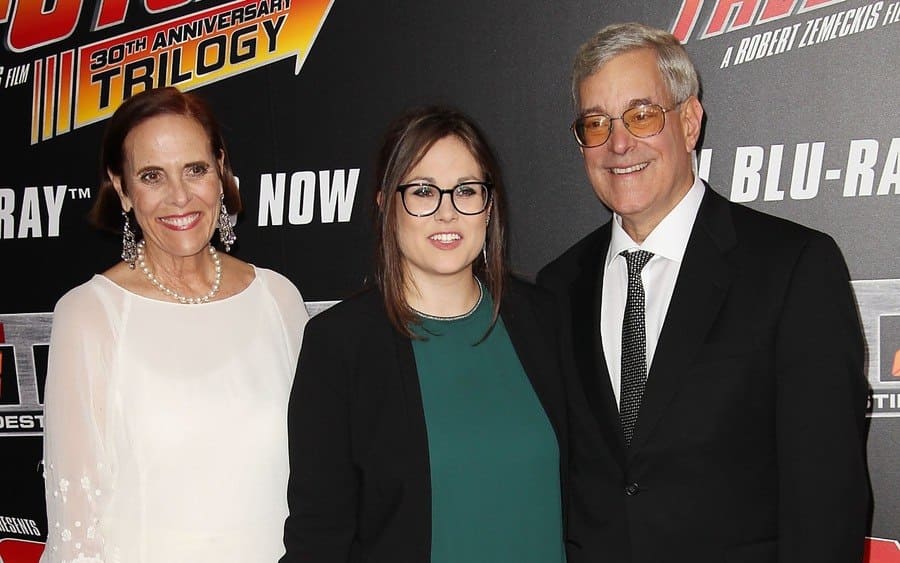
So they suggested the filmmakers show it to Disney, but even the most family-friendly studio in history was against it. They were actually on the other end of the spectrum. Disney felt the script was too risqué (you know, with the storyline of a mother falling for her son and all). But the other studios thought it wasn’t risqué enough! Eventually, Universal Studios took up the challenge.
Michael J. Fox Wasn’t Supposed to Be Marty
It’s true: Michael J. Fox almost didn’t get cast for the role of Marty McFly. Before him, there was another actor who was approved for the part. This actor, named Eric Stoltz (probably best known for playing Vincent Vega’s drug dealer in Pulp Fiction), even filmed multiple scenes for about a month. Zemeckis, however, wasn’t so gung-ho about Stoltz’s performance.
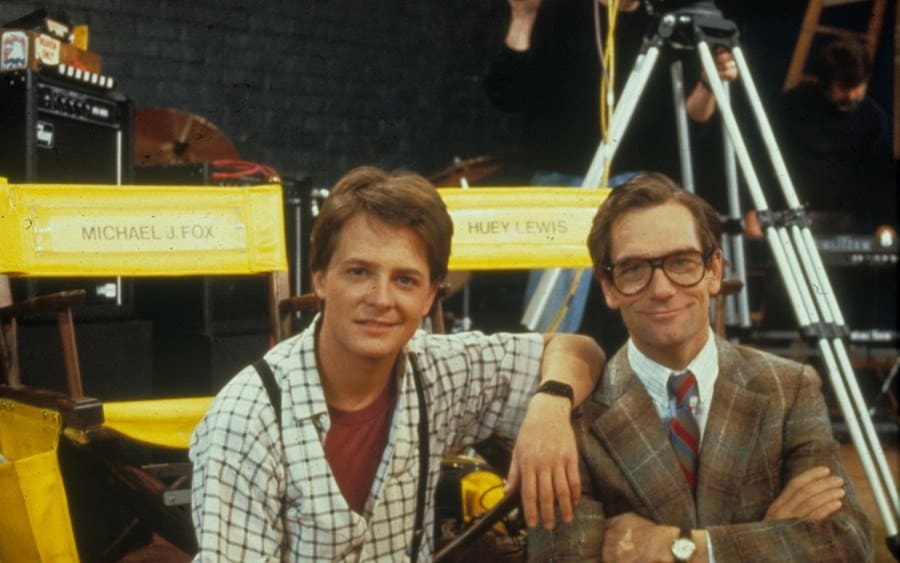
He felt he wasn’t natural enough playing Marty. Most importantly, the actor was having issues with comedy scenes. As hard as it was, Zemeckis had to make a change. At the time, Michael J. Fox was busy working on the TV show Family Ties, and the series’ producer didn’t want his star actor to be involved in any other projects.
Juggling Back-to-Back Sets
Fox’s co-star Meredith Baxter was on pregnancy leave, so he was basically carrying the whole show. Still, Fox wasn’t about to give up a once-in-a-lifetime opportunity. He signed on for the part but had to make it work somehow. He had a crazy schedule for two months straight: 10 a.m. to 6 p.m. was his time to shoot scenes for Family Ties.
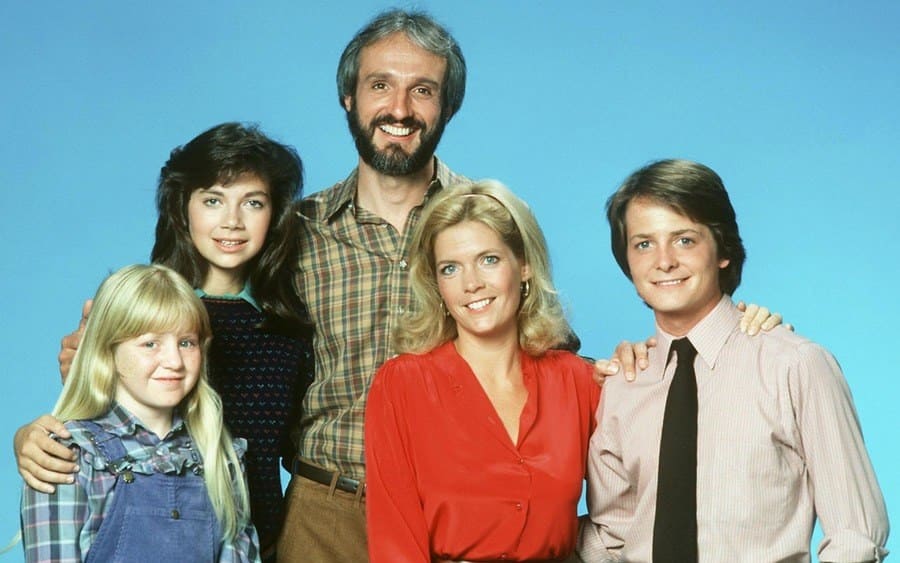
After that wrapped up for the day, he would head to Universal Studios and shoot his Back to the Future scenes until 2:30 a.m.! Eventually, Baxter was post-baby and back on Family Ties, giving Fox a little bit more free time to be able to juggle the show and the movie.
The Original Nuclear Fuel Idea
You know how it goes – the final product we see on the screen is usually somewhat (or sometimes very) different from the original script. We can’t mention all the changes, but it’s worth noting a really explosive one. You might remember that the infamous DeLorean time machine uses nuclear power as fuel.
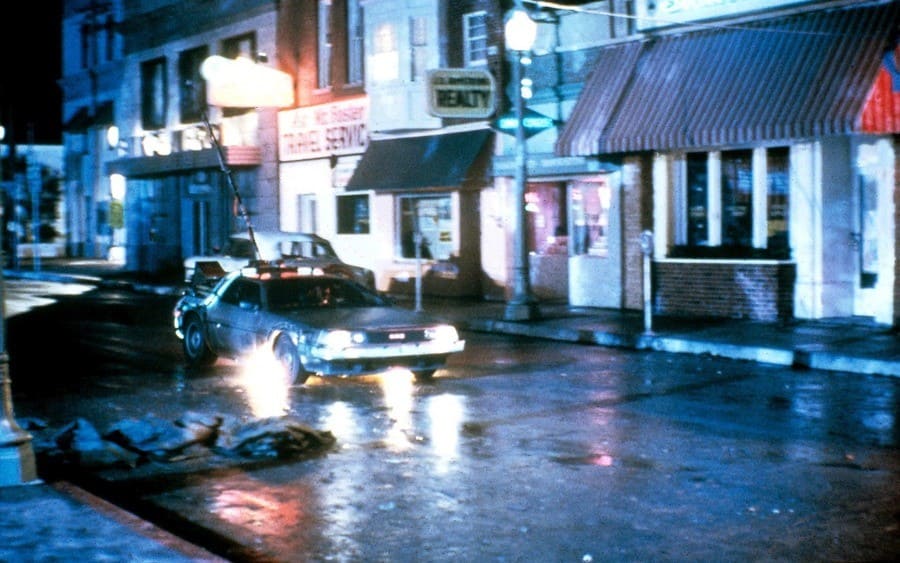
In the first movie, it becomes a real problem for Doc and Marty since they couldn’t find it in 1985. And so, Doc suggested they use the power of lightning instead. Originally, Marty was to be in a radiation suit, driving the time machine car through a nuclear blast conducted by the U.S. army. The production crew, however, determined it would be too expensive, so they had to simplify it.
This Is a Comedy?
When the film was screen-tested with audiences, they said, “This is not a comedy!” which only confused Zemeckis and Gale since the movie is full of jokes. But it turned out that the audience didn’t get a lot of them. The movie creators intentionally chose not to tell the audience what genre the movie was.
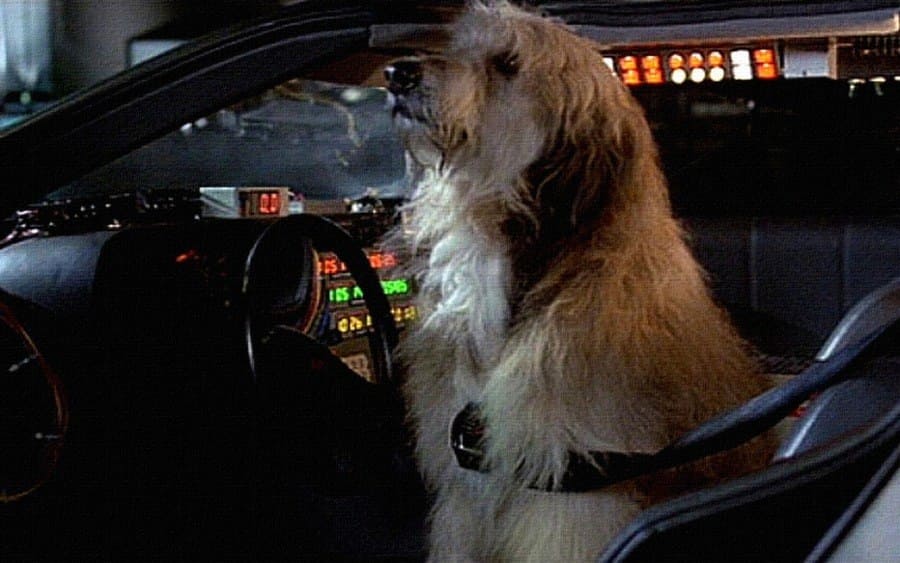
In the scene where Doc’s dog, Einstein, was put in the DeLorean to test the time-traveling process, it scared the audience; they were really worried about the dog. If you didn’t know that the movie was meant to be a comedy, you wouldn’t be too sure that everything was going to work out okay for poor Einstein. All in all, the audience enjoyed Back to the Future, and the experiment of not knowing whether it’s a comedy only sharpened the audience’s emotions.
Picking the Perfect Doc
Doc Brown is quite a colorful character, so it only made sense that casting the role was going to be a matter of fine-tuning. Many big-name actors were considered and auditioned for the role, including John Lithgow and Dudley Moore, who both wanted the part. Yet neither got as close to becoming the famed Doc as Jeff Goldblum did.
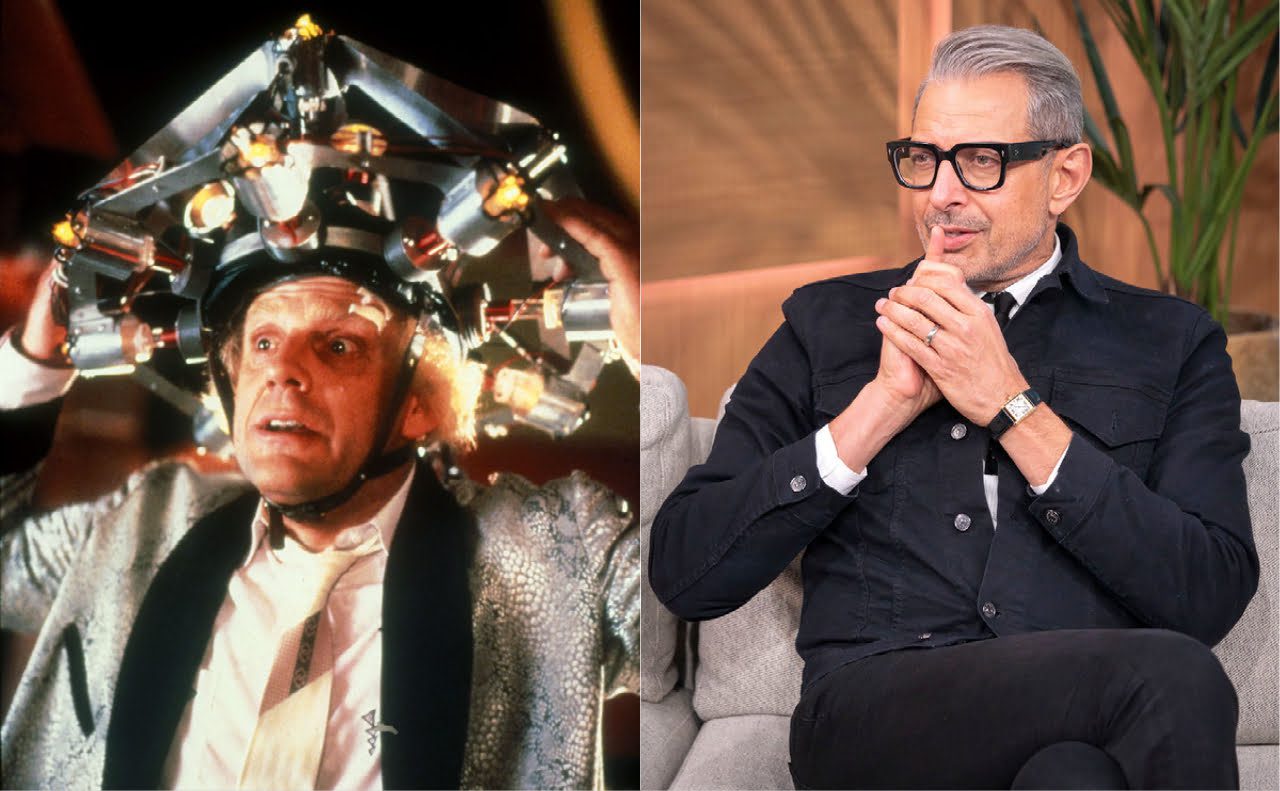
“The only other guy we really seriously considered for Doc Brown was Jeff Goldblum,” said Gale in an interview. Gale recalled just how hard it was to make the crucial decision of picking the perfect Doc character. Goldblum does indeed have that crazed scientist look in his eyes, but no one other than Christopher Lloyd could have pulled it off so authentically.
Spaceman from Pluto
The head of Universal Pictures, Sid Sheinberg, used to annoy the Back to the Future crew by incessantly sending them his notes. One of the best examples of this was when he sent them a memo asking the filmmakers to change the movie’s title. And it’s because he didn’t think anyone would ever watch a movie with the word “future” in the title.
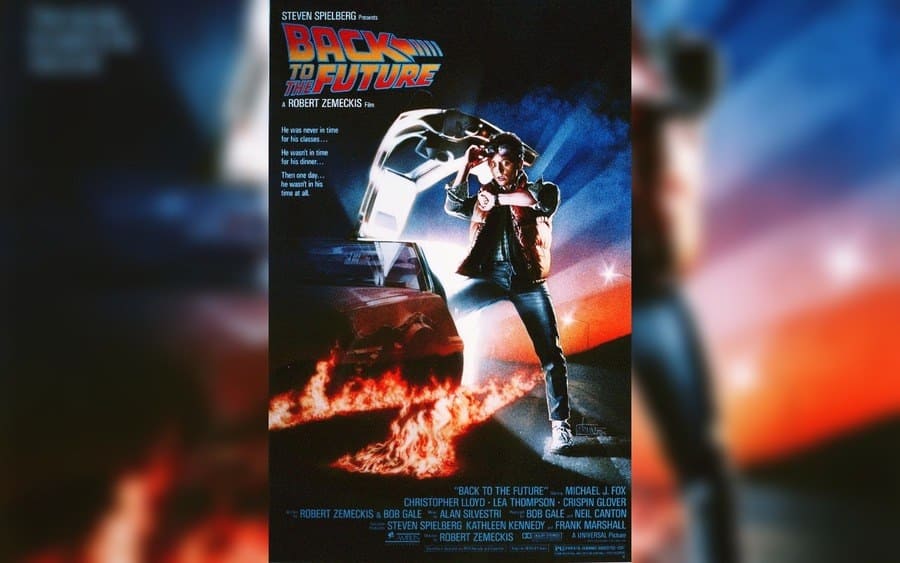
His suggestion was Spaceman from Pluto. Luckily for the world, the resounding consensus was essentially “no way” on the basis that such a title would ruin the film. Executive producer Steven Spielberg sent Sheinberg a memo of his own, telling him his title suggestion was a great “joke.” Sheinberg was so embarrassed he never brought it up again.
The Two Nearly Missed Cameos
Did you catch him? In the second movie of the trilogy, in the scene where Marty sees two kids trying to play the arcade game in a cafe, there is a short cameo by Elijah Wood. He was there for about 15 seconds, but it was his first feature movie ever. That’s a pretty awesome first movie if you ask me.
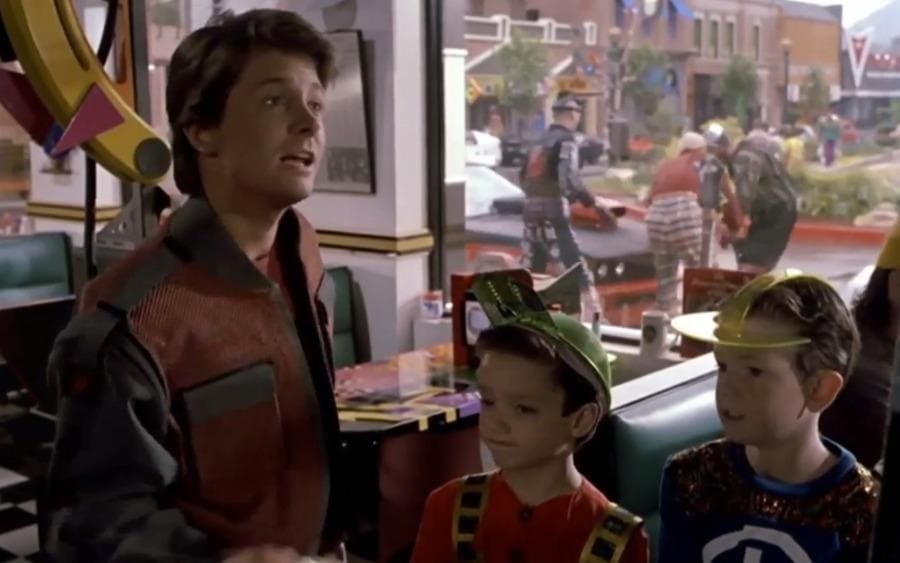
By the way, did you notice Billy Zane’s cameo? He actually appeared in the first two movies. The Titanic costar played one of Biff’s friends/followers who bullied Marty’s father. He didn’t talk very much in the movies (if at all), but he sure giggled a lot.
Ah, So That’s Why He’s Hunched Over
Just as his hairstyle and slim figure became a part of his character, so did Doc’s hunch. It made his appearance even more memorable. But there’s a reason why Doc Brown is hunched over in most of his scenes, in case you didn’t know. The truth is not all that dramatic. Christopher Lloyd was just way taller than the short-statured Michael J. Fox.
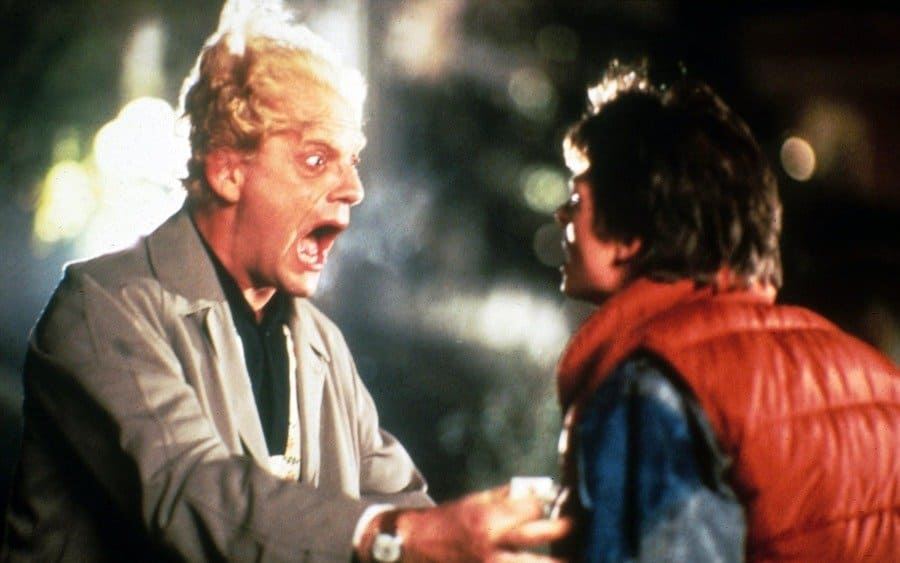
6’1” compared to 5’4½” really does makes a huge difference on the screen. It proved to be a serious issue for the crew to try to make the two characters look balanced on film. In the scenes where he’s in the same frame as Marty, he’s hunched over, but when he’s all alone, he isn’t. Ah, the magic of cinema.
The Secret of Doc’s Hawaiian Shirt
You might remember his bright Hawaiian shirt, but do you remember the print on it? If you take a closer look, you’ll see multiple prints of a train and two men on horses chasing that train, and all the elements head to the left. What’s the big deal? Well, the key elements of Back to the Future III were hidden in Doc’s shirt in Part II.
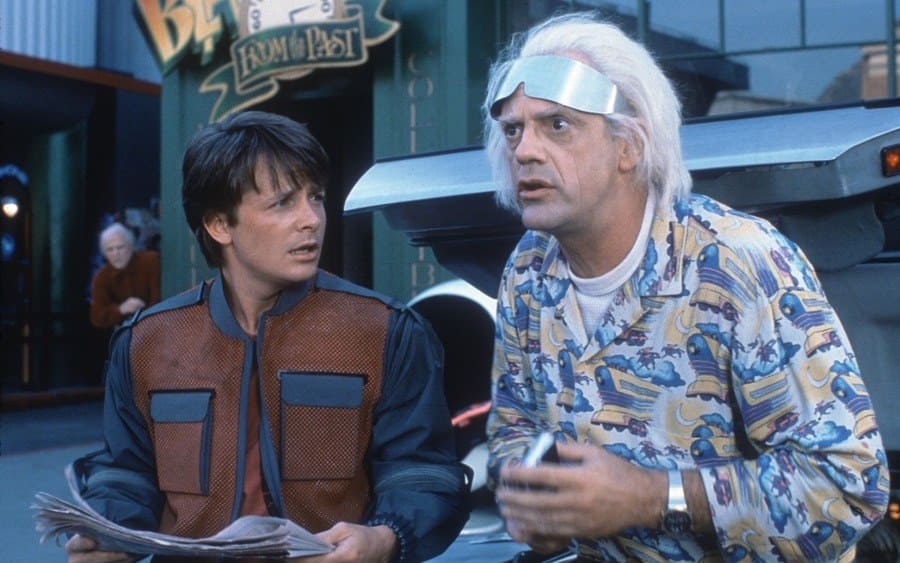
It’s exactly what happened in the finale: Doc and Marty chased a train on horses! The film is basically a Western. The images pointing left is essentially heading West. Also, in the third movie, Doc wears a bandana made from the same material that his shirt was made from. Talk about an epic Easter egg!
Marty McFly’s Singing Voice
During the climactic “Johnny B. Goode” performance, it probably seemed as though Michael J. Fox’s mouth movements and Marty McFly’s singing voice were a little off. That’s because it wasn’t Fox’s voice at all. A professional musician by the name of Mark Campbell was hired to do all of Marty’s singing in the film.
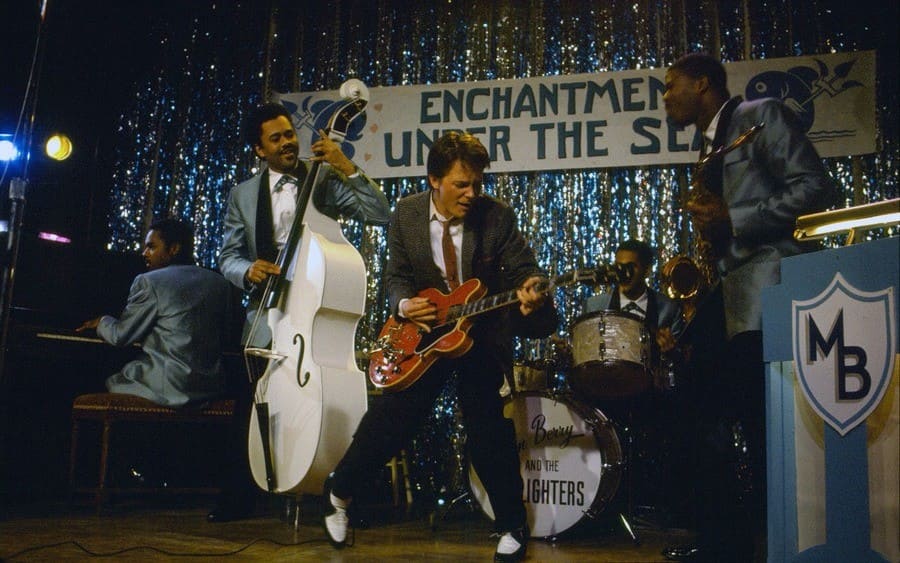
He was even credited as “Marty McFly” in the closing credits. Aside from this awesome part, Campbell’s biggest claim to fame was his tenure as the lead singer of a popular band back in the ‘80s. Do you remember Jack Mack and the Heart Attack? With a name like that, how could you forget? (I did, though.)
The Time-Consuming Makeup
Before digital de-aging technologies were introduced in Hollywood, prosthetics and makeup were the techniques used to make actors look at a different age. Lea Thompson was only 23 years old when she took on the role of Lorraine McFly in the first movie. The opening scenes, however, were set in the present day, which meant she needed to appear 47 years old.
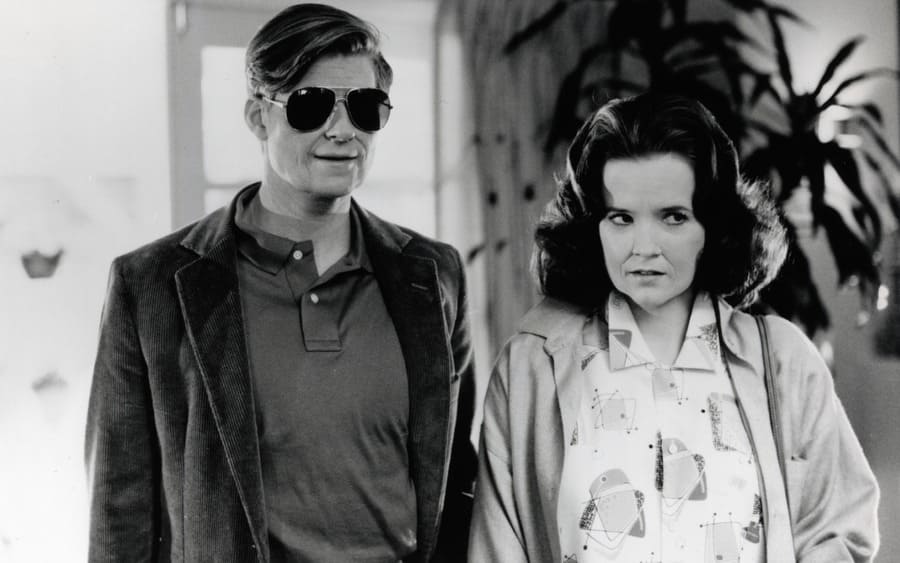
For the scenes where Thompson was shooting her old lady scenes, she had to sit in the dreaded makeup chair for three hours at a time. Thompson said she terrified her mother when she went home one evening in the makeup. That would have been hilarious to witness!
The Superman Connection
In Back to the Future II, Doc tells Marty that he altered their time machine to make it work on garbage fuel instead of nuclear power. Doc also bought a couple of useful gadgets from the future and de-aged himself by a few decades. That stuff isn’t cheap. But where did Doc get all his money from? He bought 10 copies of Action Comics #1 in 1938 and sold them in the future.
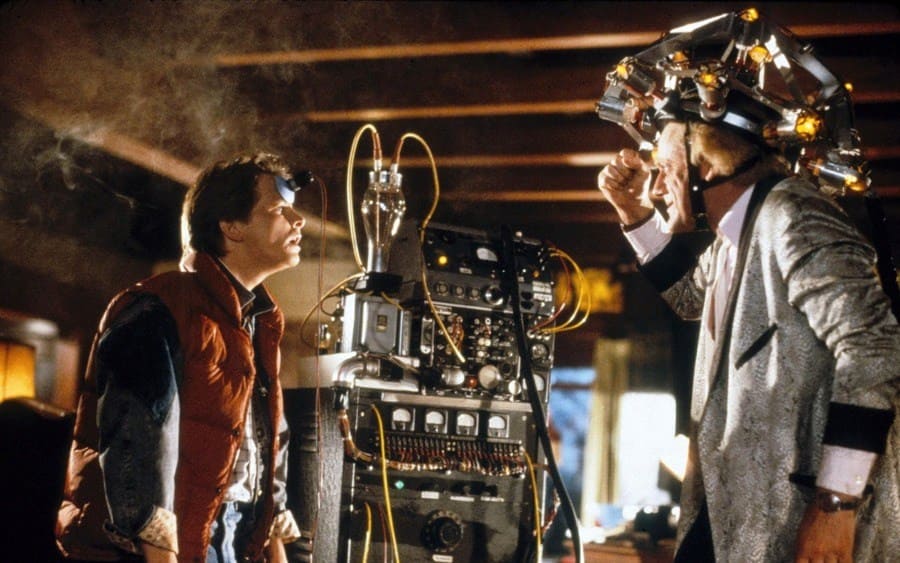
But this was only described in IDW’s Back to the Future comic books. The series was also written by Gale, and it explained what Doc doing between the first two movies. He bought three copies for only 10 cents and sold them for $2.5 million in 2015. Clever move, Doc.
Will There Be a Back To the Future IV?
It’s only natural that Zemeckis has been asked that question many times. “If I had an idea that I could have pitched to Bob [Gale] with a straight face, we would have made it. I have no answer to that!” Zemeckis answered Josh Gad on his Reunited Apart channel. It seems as though they just haven’t come up with a good enough idea for a fourth part.
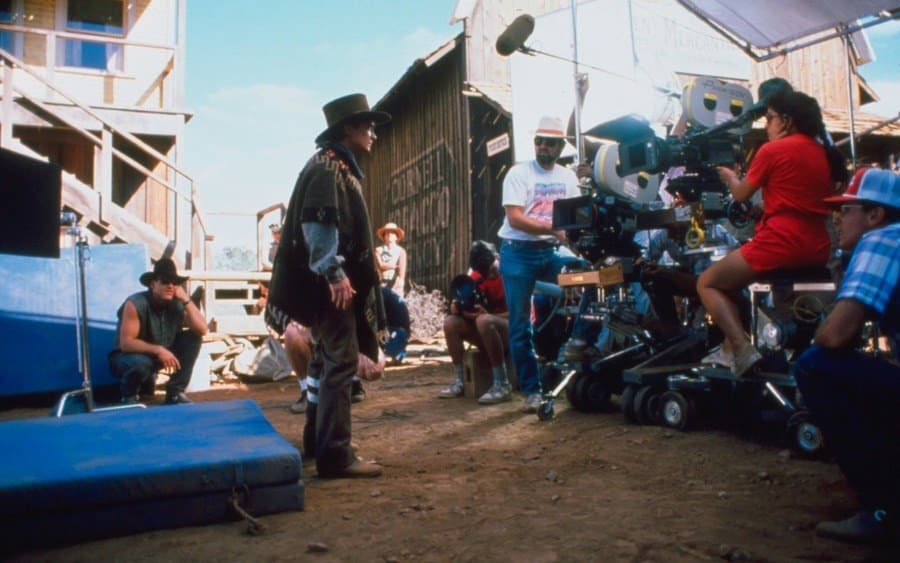
Fans have even made a fake trailer for the potential fourth installment in the franchise, with an aged Doc and Marty. Christopher Lloyd believes a fourth part needs to be made: “I think somehow it needs to kind of convey a message about something that’s important to everyone, universally, like climate change.”
Reagan Was a Fan
In 2007, the U.S. Library of Congress selected Back to the Future to be preserved in the National Film Registry for its “culturally, historically, or aesthetically significant.” Heck, even Ronald Reagan was a fan. Apparently, when Reagan first saw the joke about Doc’s skeptical response to him becoming president, he ordered the cinema’s projectionist to stop the film and roll it back, to see it once more.
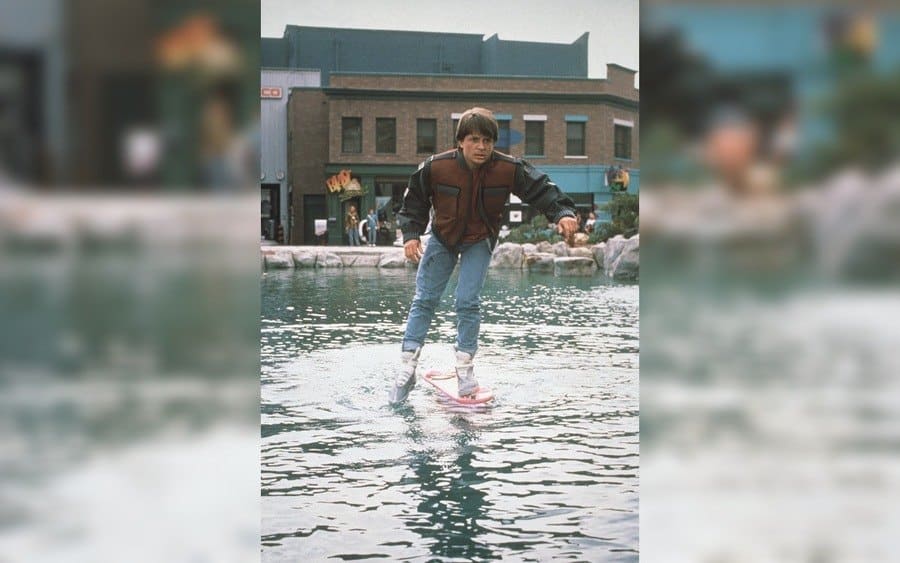
At his 1986 State of the Union Address, he referenced the movie as a way to appeal to the country’s young voters. He said, “Never has there been a more exciting time to be alive, a time of rousing wonder and heroic achievement. As they said in the film Back to the Future, ‘Where we’re going, we don’t need roads.'” Back to the Future is also seen as being responsible for a resurgence in the popularity of skateboarding in the 1980s. It made skateboarding a mainstream pastime acceptable for all, not just rebellious teens.
Marty McFreud
One of the most appealing parts of the film is Marty meeting his parents when they were his age. But kids who watch the movie don’t necessarily think about the less wholesome aspect of this storyline. There are extremely uncomfortable scenes where Marty’s mother tries to seduce him after her dad (Marty’s grandfather) hits him with a car.
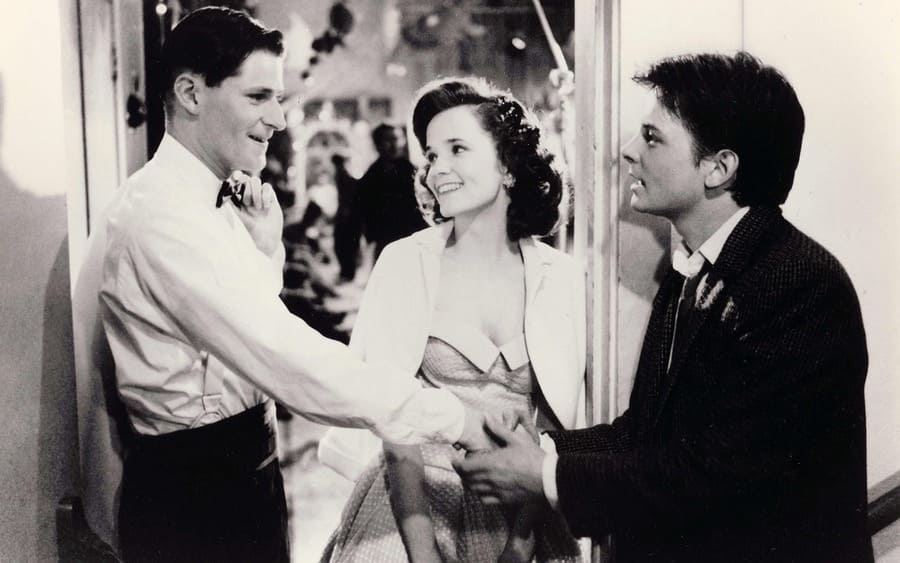
There’s a Freudian complex at work with Marty having to ward off his mother’s romantic advances to get her to go to prom with his father. If you look at it all through the lens of Freud’s Oedipus Complex theory, Marty even “kills” his father’s weakness by threatening him with the space invader disguise. Thankfully, Lorraine brings it all back to normal when she says, “This is all wrong. I don’t know what it is. But when I kiss you, it’s like I’m kissing… my brother.”
Marty B. Goode
The climactic musical performance at the prom is a highlight of the movie. Most viewers got the anecdote that Chuck Berry’s cousin called him to let him know about Johnny B. Goode, but Marty is matching more than just a tune while he plays.
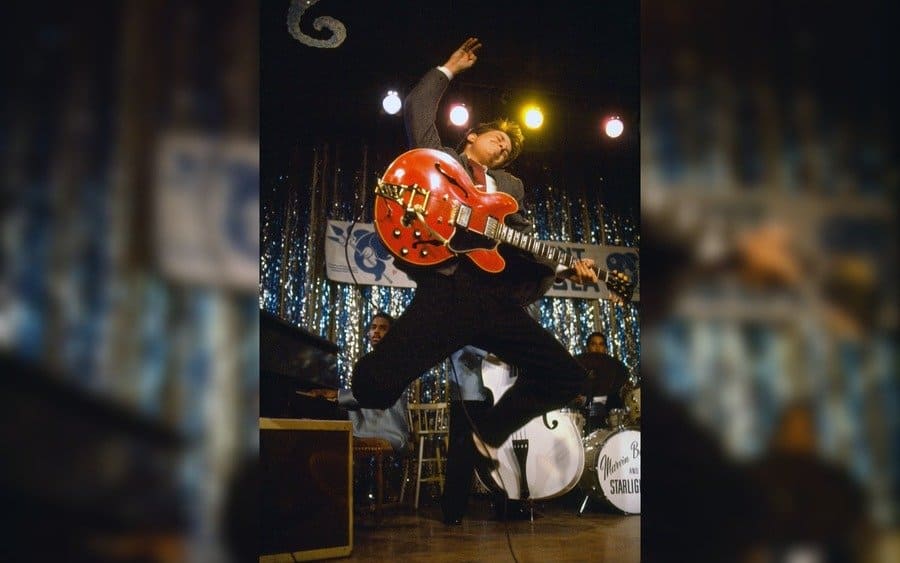
In his performance, he features Berry’s famous duckwalk, fretboard taps like Eddie Van Halen, and plays guitar behind his head like Jimi Hendrix, eventually sliding across the floor like Angus Young. All of these musical touchstones were a personal touch contributed by Michael J. Fox. The original script initially called for references to “Little Richard, Elvis, Mick Jagger, and Michael Jackson,” but Fox went his own way instead.
He Started the Fire
Those watching the movie might have noticed that when Marty gets to Doc’s house in 1955, it’s a more impressive building than in the opening scene of the movie in 1985. Doc’s home was actually his garage from 30 years before. But you might have noticed that a framed newspaper clipping in the first scene had the headline “Brown Mansion Destroyed” and the sub-headline “Brown Estate Sold to Developers.”
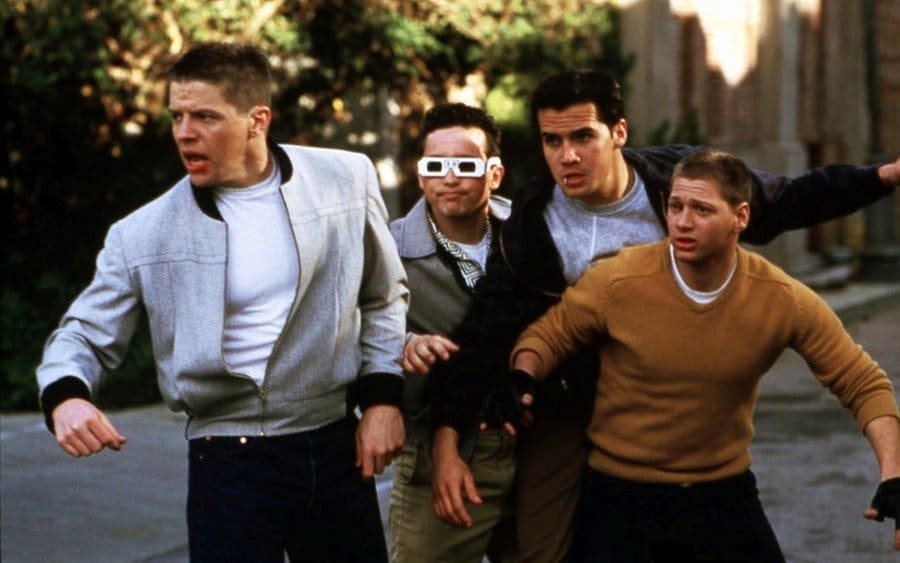
According to Bob Gale in the commentary for the film, “You can infer from that that maybe Doc set his house on fire to collect the insurance money.” Gale later kept this plotline in the comic continuation of the movie, maintaining that the fire was the only solution to further timeline mishaps.
Michael J. Fox – Marty McFly
Michael J. Fox was already a TV star thanks to Family Ties being such a success. What Back to the Future did was make him a megastar. He then went on to score more hit roles, including Teen Wolf, The Secret of My Success, Casualties of War, and Doc Hollywood, not to mention both Back to the Future sequels.
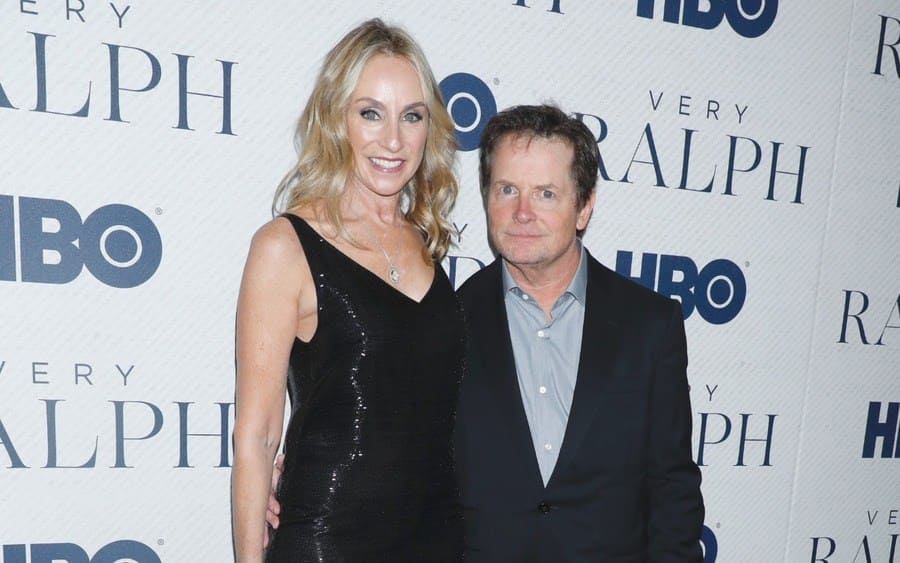
In 1996, he starred in Spin City but started slowing down his career in 1998 once he was diagnosed with young-onset Parkinson’s disease in 1991. Fox announced his retirement from acting in 2000 and devoted his time to the Michael J. Fox Foundation for Parkinson’s Research – the largest non-profit source of funding for Parkinson’s drug development in the world.
Christopher Lloyd – Dr. Emmett “Doc” Brown
Christopher Lloyd was also a recognizable face, having been on the hit sitcom Taxi as Reverend Jim Ignatowski. His wild, white hair, his enthusiasm, and freak-outs as Doc Brown made him the perfect counterpart to Fox’s chilled out, often puzzled Marty. Since Back to the Future, Lloyd has appeared frequently in film and TV, including The Addams Family, Who Framed Roger Rabbit, Dennis the Menace, Quicksilver Highway, and Stacked.
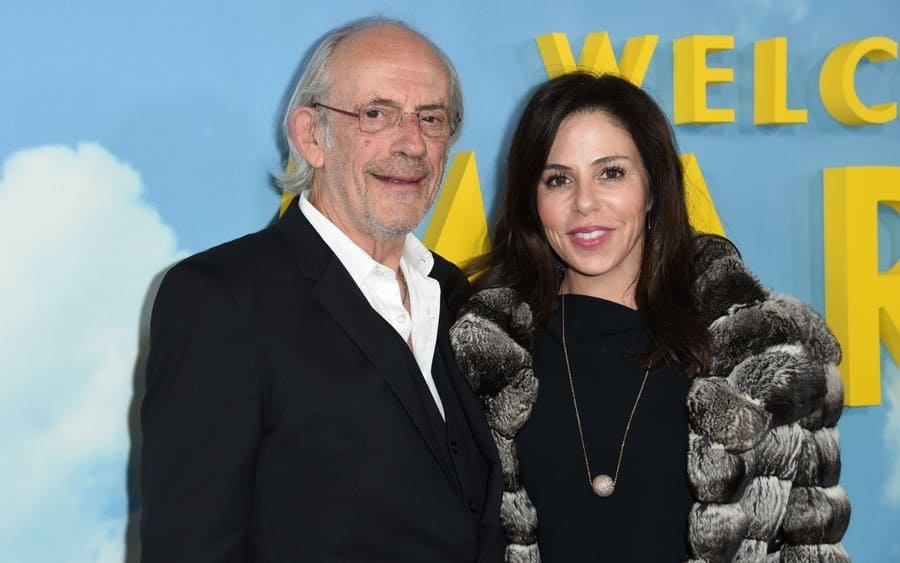
He also reprised his role as Doc Brown beyond the two movie sequels, appearing in the brief Back to the Future TV series. He voiced the character in Back to the Future: The Game and LEGO Dimensions. A recent major role of his came as the Missionary on the Syfy series 12 Monkeys.
Lea Thompson – Lorraine Baines McFly
Lea Thompson was a star in the ‘80s with roles in Jaws 3-D and Red Dawn before playing Lorraine in Back to the Future. Thompson’s role was a challenging one as she had to find a balance between comedy and drama and sex appeal. Then there was the added complication of being two versions of herself.
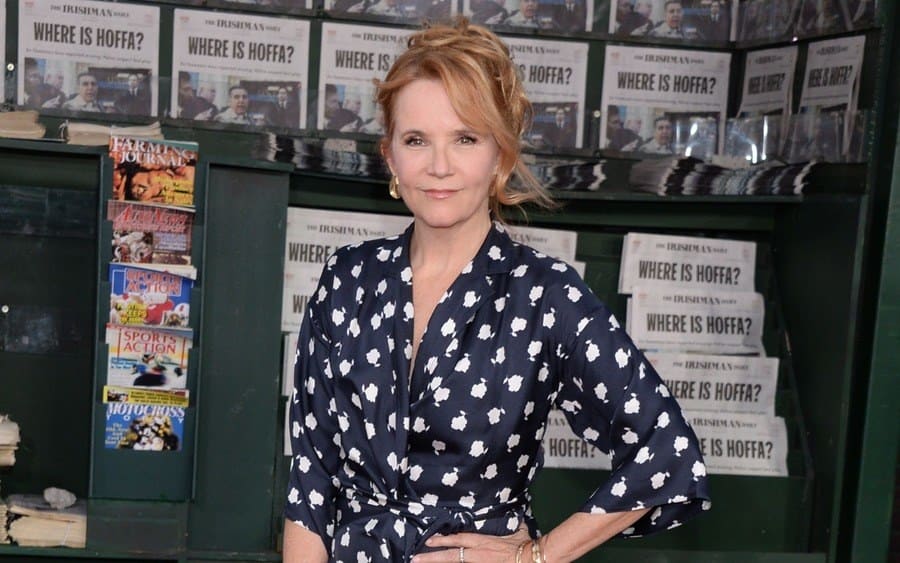
Thompson returned for both sequels and went on to have a prolific career throughout the ‘80s, ‘90s, and 2000s. Her biggest roles include Howard the Duck, Some Kind of Wonderful, Caroline in the City, and Switched at Birth. In 2006, she started directing with the TV movie Jane Doe: The Harder They Fall. She even directed her daughters Madelyn and Zoey Deutch in The Year of Spectacular Men in 2017.
Crispin Glover – George McFly
His stance, his voice, and his unusual laugh made Crispin Glover stand out from the rest as George McFly. The sheer awkwardness he brought to the role is a counterbalance for everyone else in the 1950s Hill Valley. Back to the Future granted Glover multiple opportunities, but unlike his co-stars, he didn’t come back as George McFly for either of the sequels.
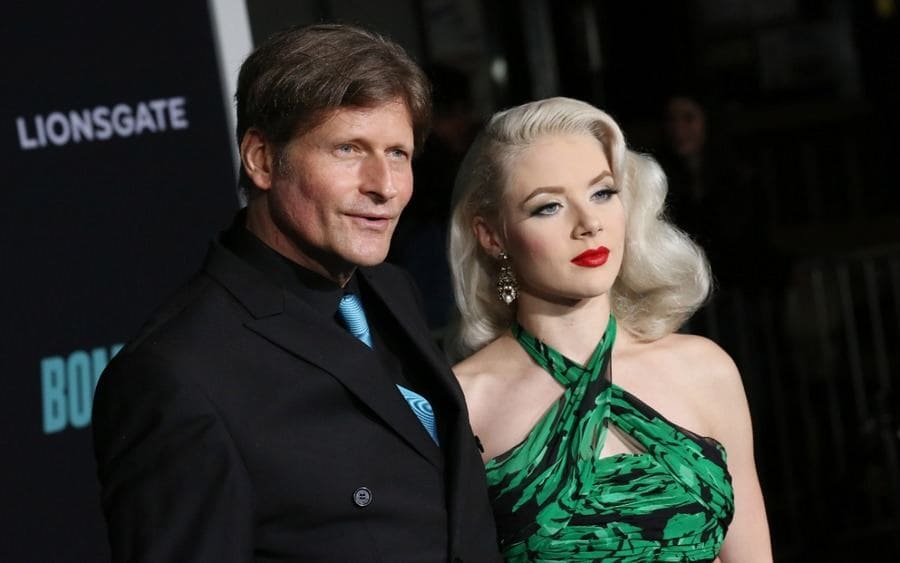
Glover went his own way in the ‘80s and ‘90s, acting in films like At Close Range, River’s Edge, Wild at Heart, Rubin, and Ed, and The Doors. He started directing, too, releasing What Is It? in 2005 and It Is Fine! Everything Is Fine. Most of his projects can only be seen on live tours. Glover also wrote several books through his own company, Volcanic Eruptions.
Thomas F. Wilson – Biff Tannen
Back to the Future was able to, after giving us Marty and Doc, create yet another iconic character: Biff Tannen. The bully haunts and taunts the McFly family for two films (and his ancestor in the third). Wilson played the evil and dim character perfectly through the various generations of the Tannens in the Back to the Future trilogy and TV series.
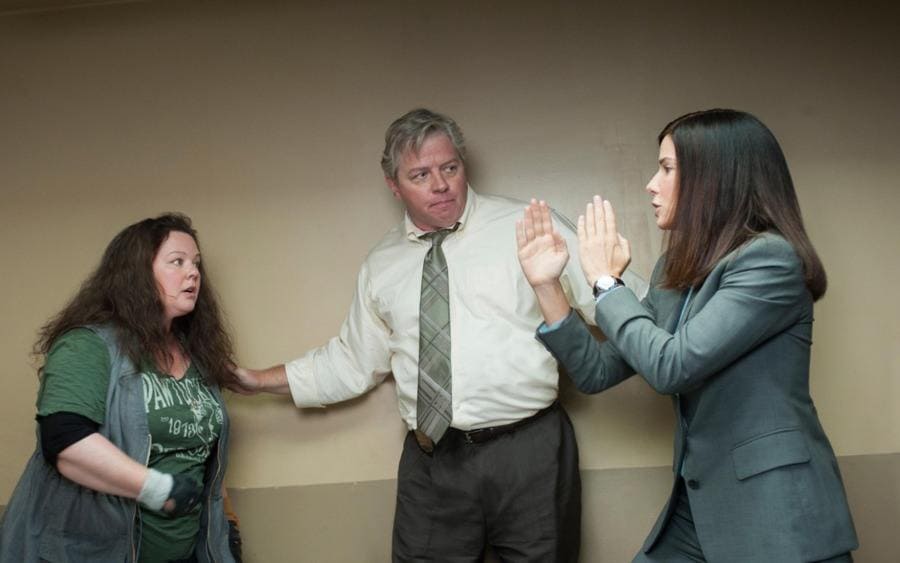
Wilson continued a prolific career as well on film, TV, and the stage. He was in Freaks and Geeks, Ed, Help Me Help You, and lent his voice to everything from Buzz Lightyear of Star Command to The New Batman Adventures. In 2012, he wrote a memoir of his Hollywood experiences called The Masked Man. He’s even a trained painter.
James Tolkan – Mr. Strickland
James Tolkan was already 20 years into screen acting when he became the intimidating Principal Strickland in Back to the Future. He was so convincing in his role as an authority figure that he became an ‘80s icon because of it. He played another hard-nosed character in the classic of the decade: Top Gun.
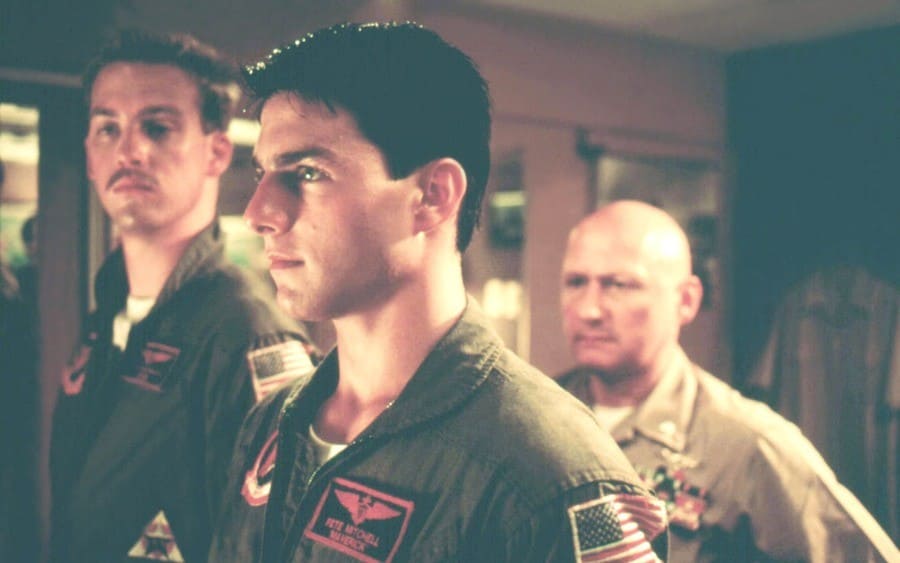
Tolkan stuck around for both sequels and continued to act after the film’s success. Other major ‘80s roles were in the TV series Mary and Remington Steele, The Hat Squad, and Cobra in the ‘90s. Now approaching his ‘90s, he seldom acts. His most recent role was in the Western film Bone Tomahawk.
Marc McClure – Dave McFly
One of the features of Back to the Future is Marty’s present changing from the beginning of the film to the end. The two actors playing Marty’s siblings had to significantly alter their characters throughout the movie. McClure was one of them and was up for the challenge. McClure had been acting for a decade by the time the film was made. He already had blockbuster experience with his role as Jimmy Olsen in the Superman franchise.
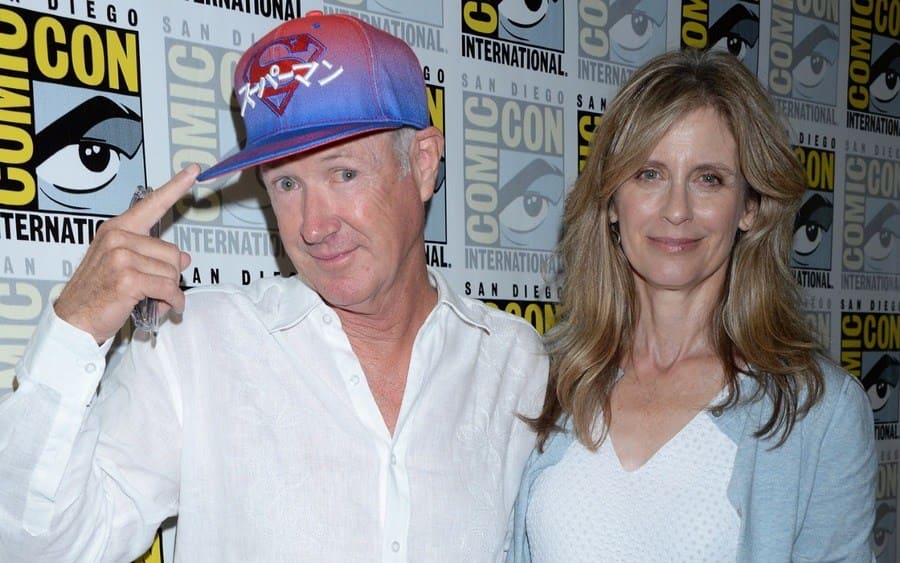
After Back to the Future, he appeared as Jimmy again in Superman IV: The Quest for Peace and then in both Back to the Future sequels. He went on to work regularly in film and TV, with roles in Freaky Friday, Apollo 13, and an episode of Smallville.
Wendie Jo Sperber – Linda McFly
Wendie Jo Sperber was in the second part of the double act that made the McFly siblings. She returned to the screen for Back to the Future Part III, which did her career well. She appeared on the TV series Women in Prison, Babes, and Hearts Afire. After being diagnosed with cancer in 1997, Sperber became an advocate for different support groups.
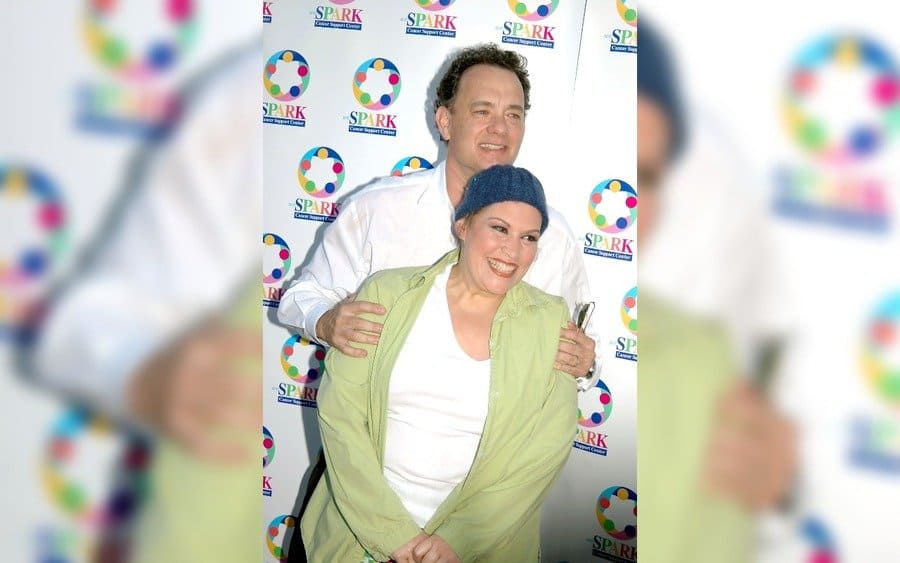
In 2001, she opened weSPARK, a support center in California that’s dedicated to “enhancing the quality of life for cancer patients, their families, and friends.” Unfortunately, Sperber died in 2005 at the age of 47.
Claudia Wells – Jennifer Parker
Claudia Wells was a seasoned TV actress when she landed the role of Jennifer in Back to the Future. She was in Herbie, The Love Bug and Family before this film. Afterward, she went on to star in Fast Times. Wells was unable to participate in the sequel, though, choosing instead to spend time with her mother, who had been diagnosed with cancer.

She was replaced by Elizabeth Shue in the sequels, but she did reprise the role of Jennifer with her voice in Back to the Future: The Game. Due to her mother’s ill health, Wells left the industry and decided to open Armani Wells, a re-sell store in L.A. She’s also a founding board member of Kids in the Spotlight, a non-profit organization for foster children. In 2011, she returned to acting as Jennifer Parker in the short film Back to the 2015 Future.
The Paradox Solved
One of the reasons that Back to the Future holds up is that it doesn’t need to dwell on the scientific details. The movie focuses on the dramatic needs of the film instead. But people have come up with theories to explain the time travel paradox. Comics writer Ryan North broke down exactly how much “meta-time” the changes in the film’s timeline take to affect the events we saw in the movie.
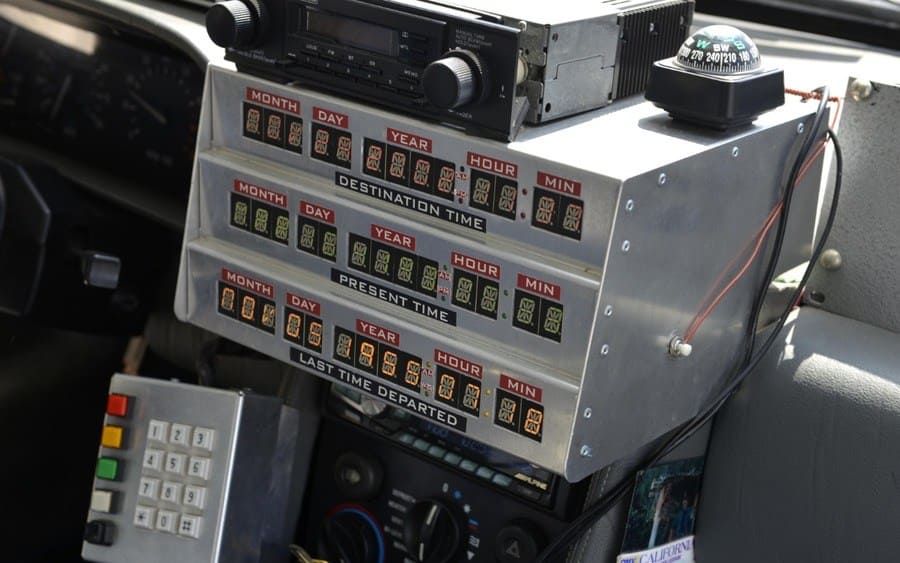
The “changes to the timeline THEMSELVES take time… A change made to the timeline on November 5th, 1955, takes seven days of real-time to ripple through time and reach June 9th, 1968.” For example, Marty’s immediate recovery after getting his parents back together can be explained: “The timeline is flexible, but like a spring, it has a preferred shape… Changes that restore it to its original form propagate much faster.”
Looks Like It Runs in the Family
One of the whole trilogy’s most unforgettable visual gags occurred when Marty arrived in 2015. Strolling into Hill Valley’s town square, he sees an awning advertising Jaws 19. Fans will remember the holographic closing in on him and a flustered Marty unconvincingly commenting, “Shark still looks fake.”
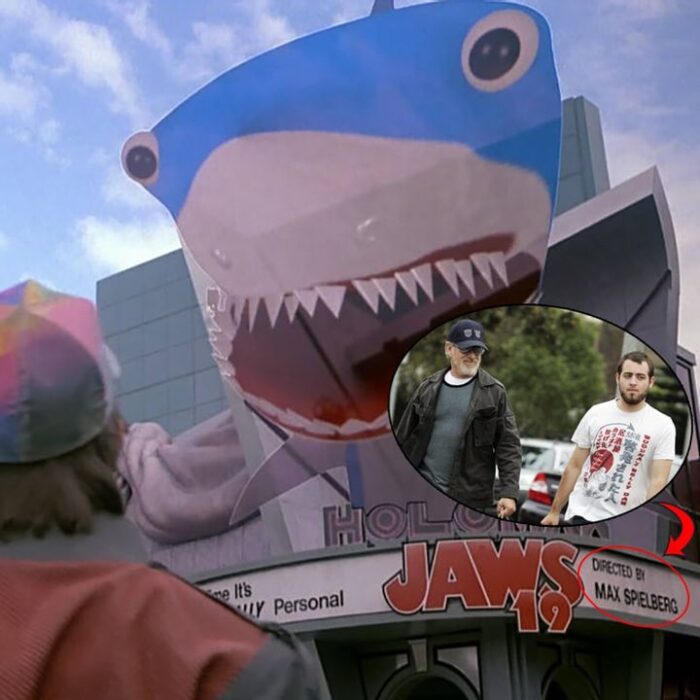
What you might’ve missed, though, is that Jaws 19 was directed by Max Spielberg. The son of Back to the Future executive producer and the Jaws director Steven, Max was actually born in 1985, so directed a movie in 2015 is possible. Real-life Max has worked in entertainment – working on video games.
Always a Good Idea to Go Antiquing
The trilogy’s largest overlap is the 2015 antique store where Marty purchases the Grays Sports Almanac, as it also has a lot of hidden surprises. Included is a Guess denim jacket with an “Art in Revolution” button – the same button Marty had in the first film – as well as a JVC camcorder like the one Marty used to document Doc’s first-time travel experiment.
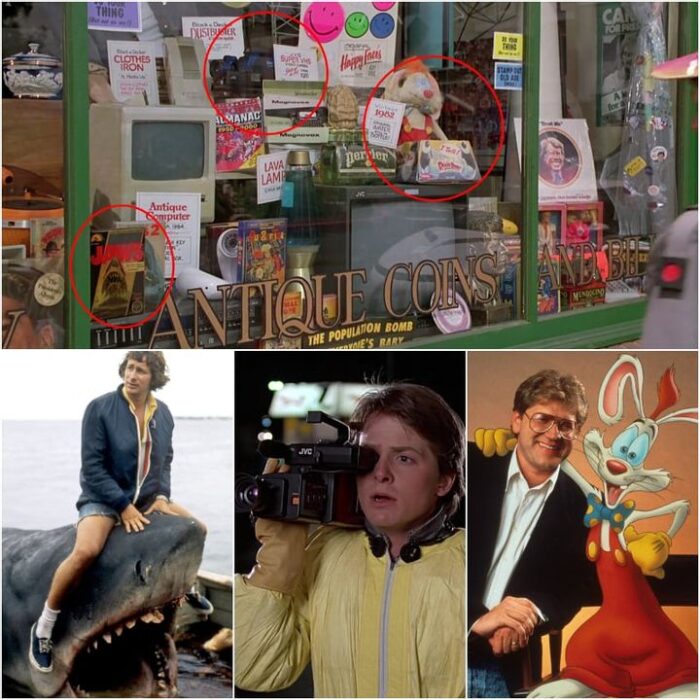
There were also items from Jaws and Who Framed Roger Rabbit? Both of these films were directed by either Back to the Future executive producer Steven Spielberg or Back to the Future director Robert Zemeckis.
From Two to Only One
It’s one of Back to the Future’s most known Easter eggs, but we had to include it. The location of Doc Brown and Marty’s late-night gather was the Twin Pines Mall, which was allegedly constructed on land once owned by a farmer called Peabody.
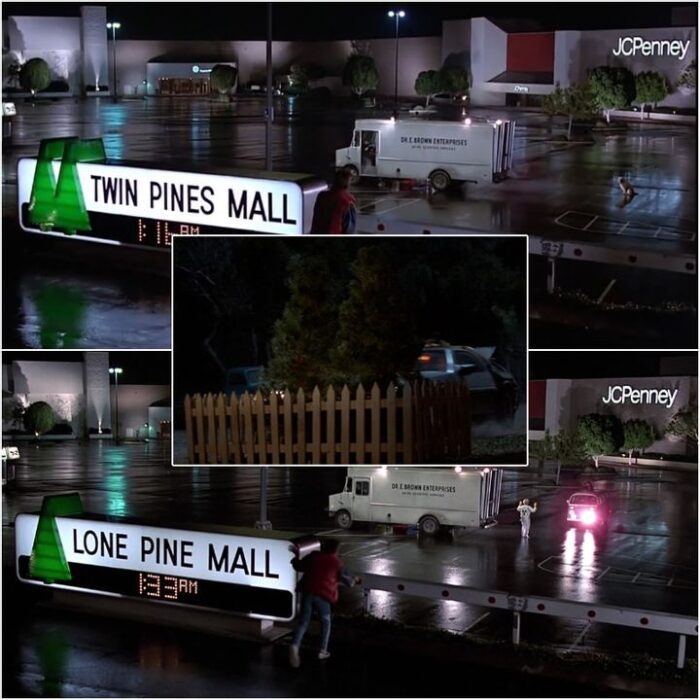
When Marty travels back to 1955, he remains in the same location – but the mall obviously hasn’t been built yet. He crashes into Peabody’s farm, called Twin Pines Ranch, and knocks down one of the two pine trees. When he returns to 1985 at the movie’s end, we see the sign now reads Lone Pine Mall.
Marty’s Into Niche Art Exhibits
This obscure small detail is equal parts interesting and strange. When we first meet Marty in Part I, he’s wearing his famous jean jacket with some pins. Looking closer, the pin reads Art in Revolution – the title of an actual Soviet art exhibit held at London’s Hayward Gallery in 1971.
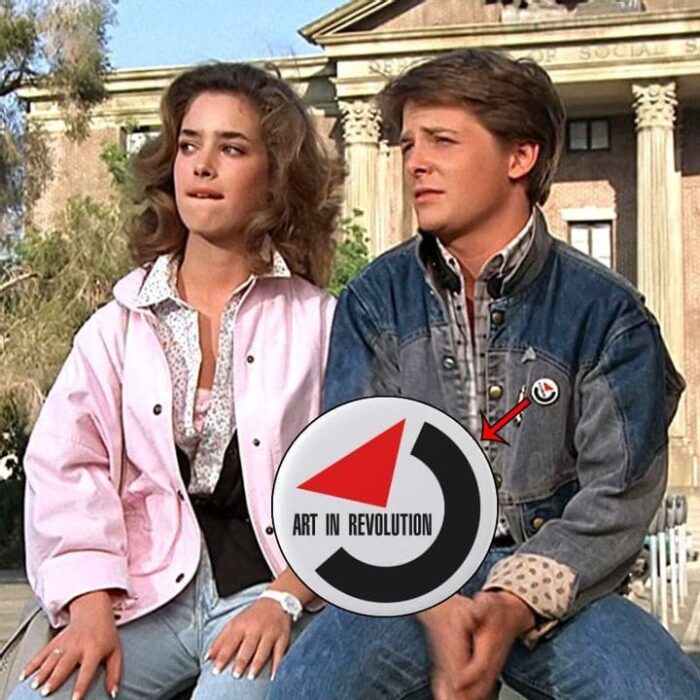
It’s incredibly cool, but we’re having a difficult time wrapping our brains around how a California teenager in the mid-’80s would have gotten his hands on something that niche. It’s either a ridiculously fortunate flea market find, or the Back to the Future wardrobe department just enjoyed showing off.
Full of Self-Fulfilling Prophecies
In 1985, the city’s mayor is Goldie Wilson, but we don’t meet him until 1955 when he’s one of the busboys at Lou’s Café. Speaking to a young George McFly, Goldie announces that someday he’ll be someone, and Marty answers that he will – the mayor.
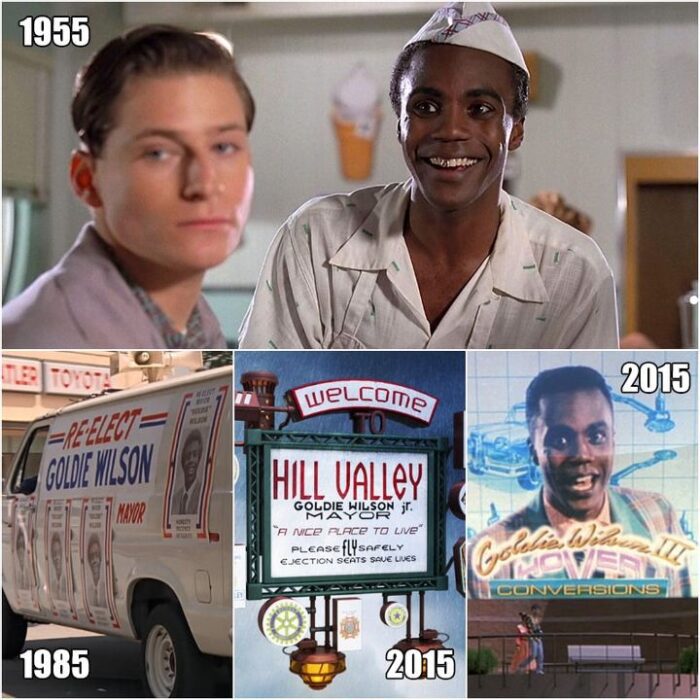
This plants the idea that inspires Goldie to actually become mayor. The Wilsons become a political dynasty, as Goldie Wilson II followed his dad and became mayor in 2015. His own son, Goldie Wilson III, chose business over politics, as seen in an advertisement for his company – Goldie Wilson Hover Conversion Systems.
Get This Man a Drink!
The trilogy loves a running gag, but one of the best might also be the least obvious. Pay extra attention whenever you watch them the next time. In every single movie, Marty orders a drink but never gets to drink it because a Tazsdnnen interrupts with a “Hey, McFly!”
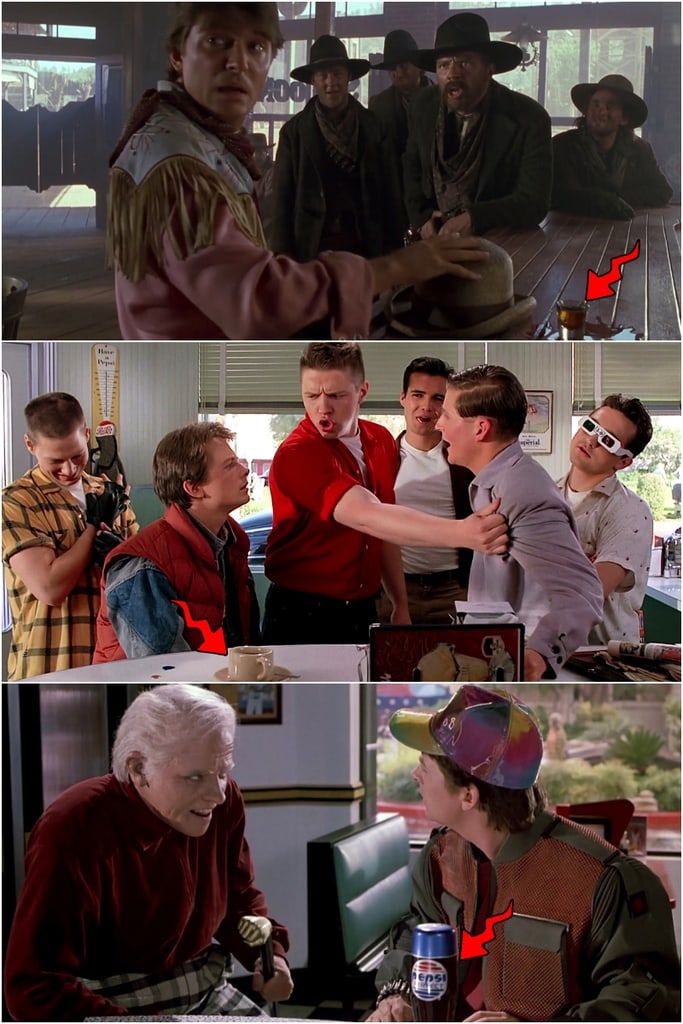
In Part I’s 1955, Marty orders a cup of coffee but is disrupted by young Biff. In Part II’s 2015, he receives his futuristic Pepsi but is again disrupted by old Biff. Finally, in Part III’s 1885, he gets an alcoholic beverage but is interrupted by Buford “Mad Dog” Tannen.
Pedestrians Have the Right of Way
Courthouse Square, which is Hill Valley’s downtown square, absolutely still exists in the Universal Studios Lot in California. The sound stage, which was formerly called Mockingbird Square after appearing in the classic movie To Kill A Mockingbird, may also be familiar to fans of the Gremlin films as Kingston Falls.
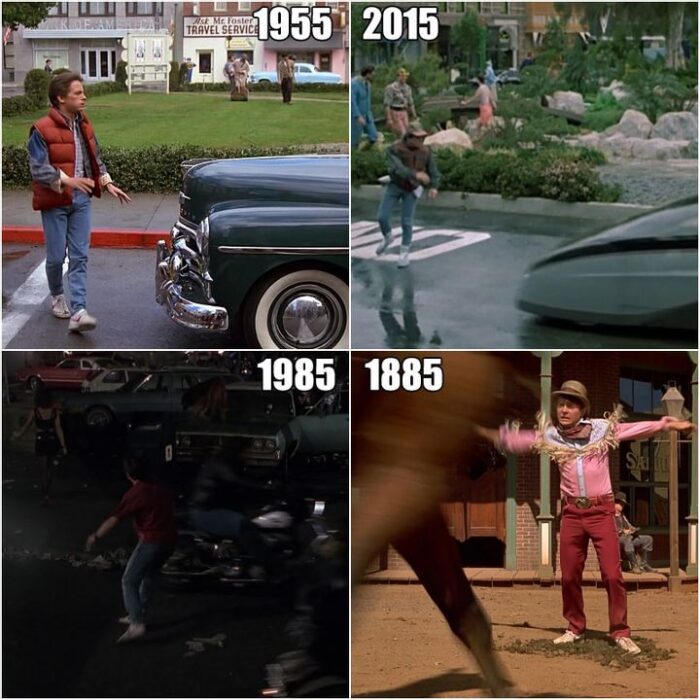
Here’s the fascinating small detail we saw, though – every time Marty explores the main square throughout each of the movies, in the 1955, 2015, nightmarish 1985, and 1885 timelines, he’s nearly run over – by a bike, twice by an automotive, and finally by a horse.
Meatloaf One Too Many Times
When Marty eats dinner with his family in 1985, we understand how sad the McFlys’ lives are. Marty’s brother works at Burger King, his sister is aggressively single, his mom seems unhappy, and his dad is a total pushover. If you focused on that, you likely missed the fact that they were eating meatloaf.
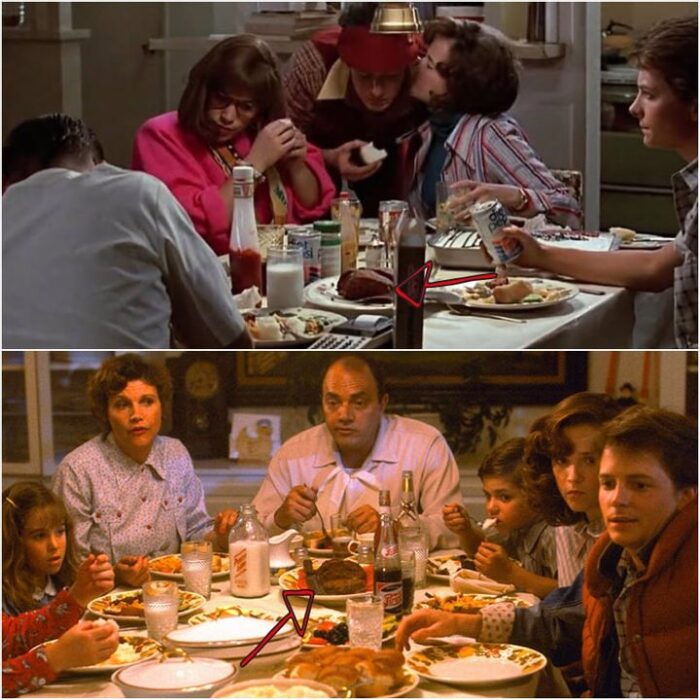
When Marty travels to 1955, he eats dinner with Lorraine and her household. They had meatloaf, so technically, Marty had meatloaf two meals in a row but with a 30-year time difference. It’s more hilarious considering that early drafts of the script wrote Marty despising meatloaf.
Countless Tributes to Clint Eastwood
The last two films have some obvious allusions to Clint Eastwood, from Part II’s Biff watching A Fistful of Dollars in his jacuzzi to Marty using his name in Part III’s Wild West. But there are several ambiguous references.
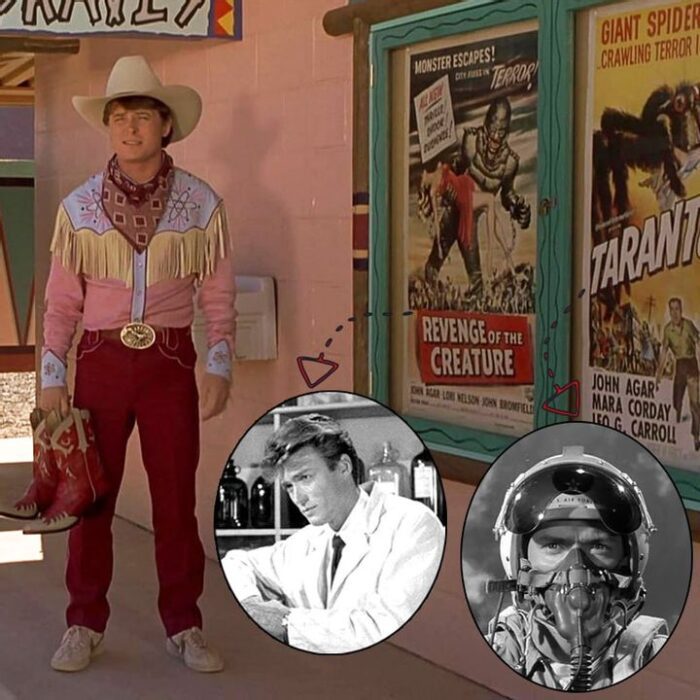
In Part III’s beginning, Marty wears hilariously bright cowboy clothes and complains, “Clint Eastwood never wore anything like this,” causing 1955’s Doc Brown to inquire, “Clint who?” Marty replies he isn’t famous yet while standing next to posters for Revenge of the Creature and Tarantula – actual 1955 movies that Eastwood appeared in with uncredited roles.
Welcome Home, Uncle Joey
Although he’s Marty’s favorite uncle, we don’t see Lorraine’s brother Joey on-screen as an adult. In the first movie’s 1985, Lorraine serves cake that was meant for Joey’s release from prison; only he doesn’t get parole (again).
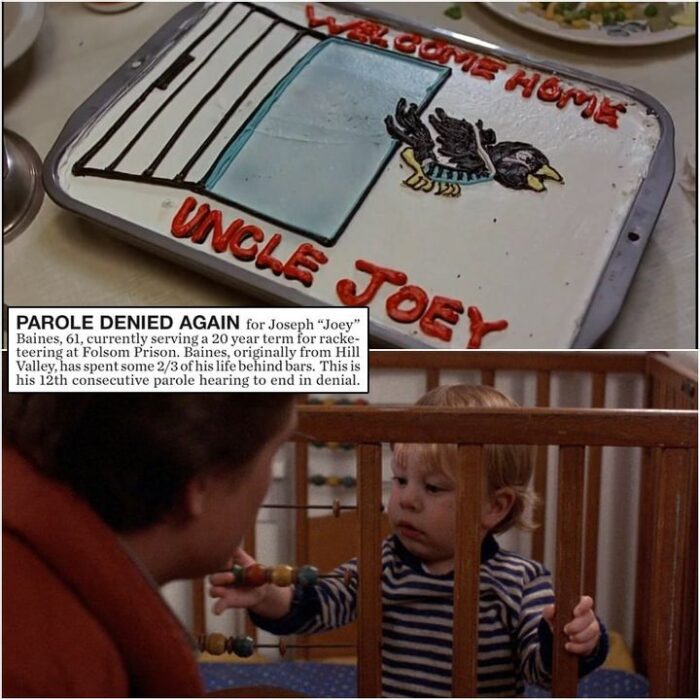
We do meet a toddler Joey in 1955, with Marty’s grandmother saying the infant, wearing striped pajamas, never exits his playpen, which parallels a jail cell. In the second film, Marty doesn’t notice his copy of USA Today has an article about Joey, reporting he’s been denied parole for the twelfth time and has spent about two-thirds of his life in jail.
‘Dude’ Isn’t Just Surfer Slang
When Marty arrives in 1885 Hill Valley in Part III, cowboys called him “dude” numerous times, including Buford “Mad Dog” Tannen, who asks, “What’s your name, dude?” – to which Marty replies “Eastwood. Clint Eastwood.” Surprisingly, “dude” isn’t just surfer slang from the ‘80s.
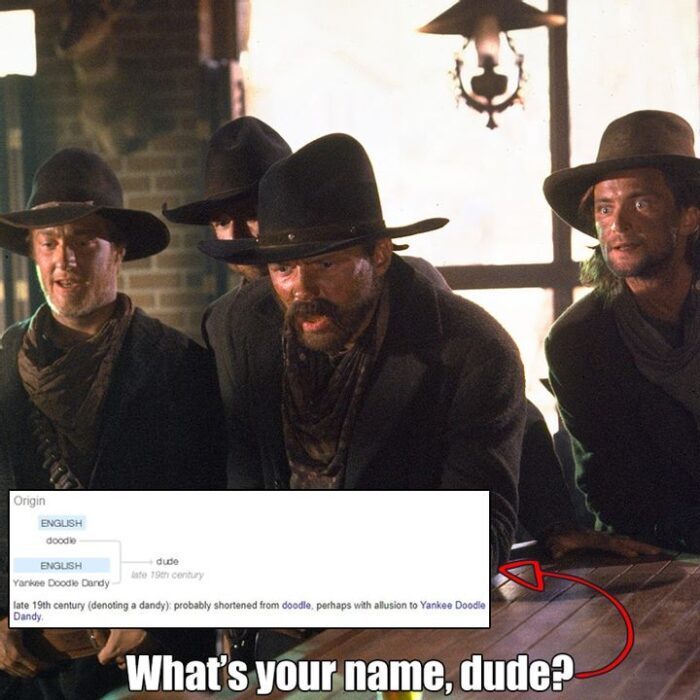
Originating in the 19th century, ‘dude’ was considered a pretty harsh insult. A shortened form of “doodle” from the song, “Yankee Doodle Dandy,” it was linked with “dandies” – men who lived in the city who wore in fancy clothes and traveled West to their “dude ranches” – vacation ranches for the rich upper class from the East.
Reemergence of the Red Toy Car
It’s public knowledge that the second and third Back to the Future films were made back-to-back (to the future), but Part II and Part III don’t just continually reference one another – the first movie gets some attention as well. The third movie begins in 1955, with Marty and Doc Brown at the Doc’s house.
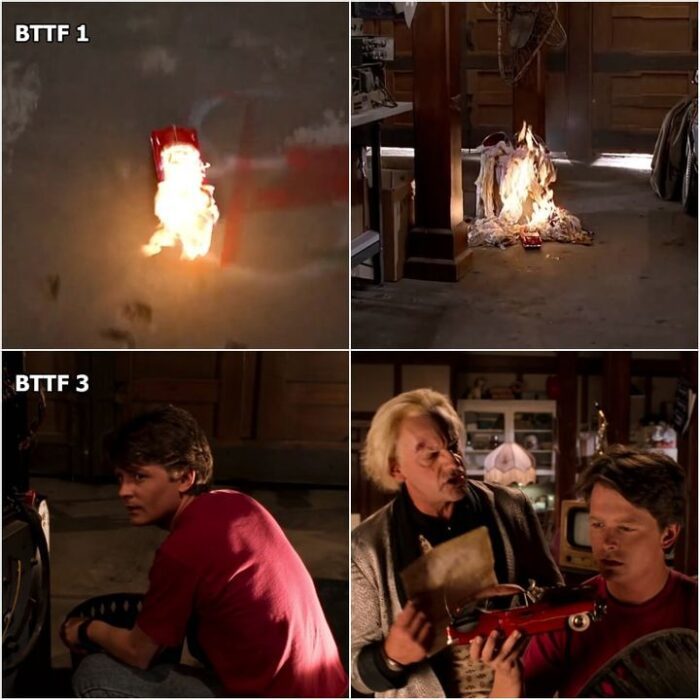
While past Doc reads future Doc’s letter, Marty plays with his belongings. Eventually, he locates a burnt toy car in the garbage can – the same toy car that started burning during Doc’s trial of the time machine way back in the first film.
Cheers to the Continuity and Consistency
Keeping in mind that it deals with time travel and its ramifications, it’s not surprising that the Back to the Future franchise highlights all of the changes it creates in the timeline. In the first movie’s peak, for instance, Doc Brown climbs Hill Valley’s clock tower to help send Marty back to 1985 in the future.
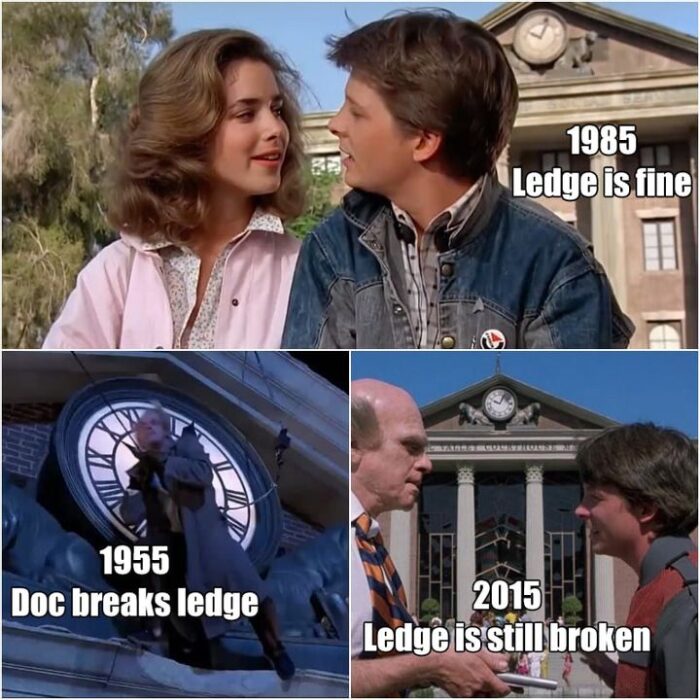
By doing that, he damages the concrete right below the clock. Now, at the start of the film, in the unaffected 1985 timeline, the concrete’s intact. When Marty returns to the clock at the end of the film, though, we can see it’s now broken.
Hanging Onto Every Second
The first Back to the Future’s peak sees Doc Brown desperately trying to connect two cables, helping Marty to travel back to 1985. It also shows Doc hanging from one of the hands of Hill Valley’s clock tower. It’s a scene that was referenced seconds into the film.
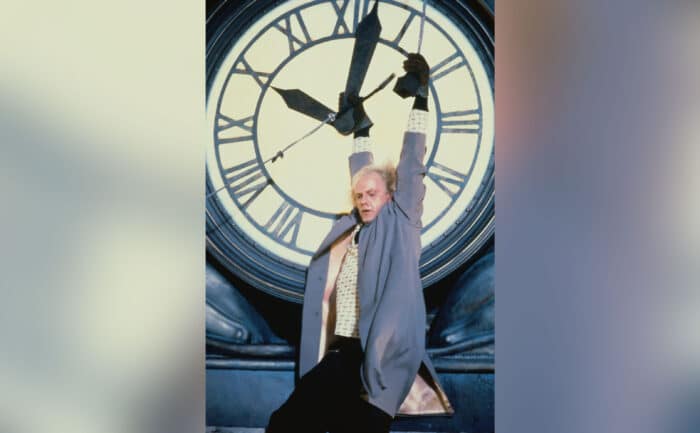
At the start, the camera pans across Doc’s home, showing several clocks. One shows a man hanging from a clock tower – inspired by a scene from the 1923 movie Safety Last, starring Harold Lloyd (not Christopher Lloyd’s relative). Surprisingly, this wasn’t a unique prop – back then, the clock was available in stores.
Hollywood’s Top Performing Train
Part III had a memorable climax, featuring a hijacked train propelling the ruined DeLorean to the 88 miles-per-hour it requires to time travel. What the typical viewer might not know is that the largest star by far in that scene wasn’t Michael J. Fox or even Christopher Lloyd – it’s the train itself!
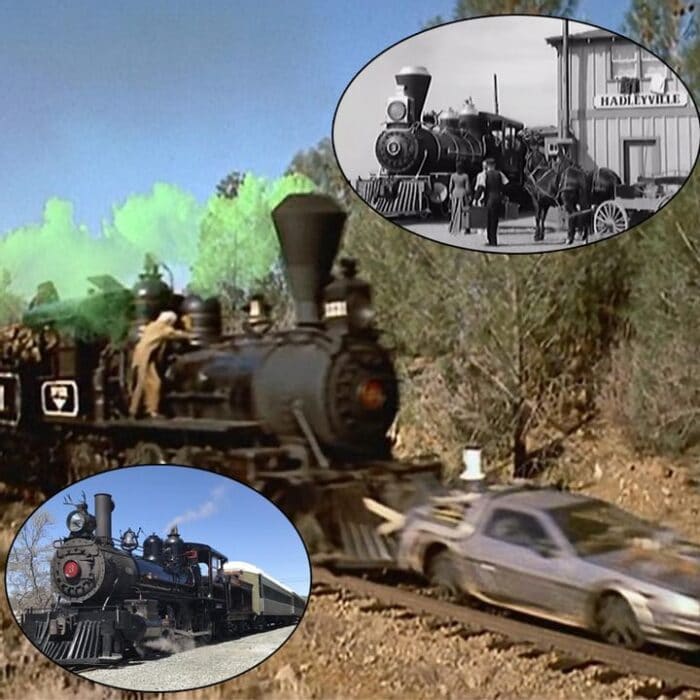
Called Sierra No. 3, it started in show business in 1919 and appeared in movies from the influential High Noon to the class Unforgiven, directed by Clint Eastwood. Don’t stress – the train destroyed in Part III was simply a quarter-scale model, and the real train is still operational today.
Kind of Listening to Van Halen
What’s everyone’s favorite scene in Back to the Future? It could be Marty dressing as “Darth Vader from the planet Vulcan” to scare George into asking Lorraine out. The blatant Star Trek-Star Wars reference aside, the scene hides another fascinating detail.
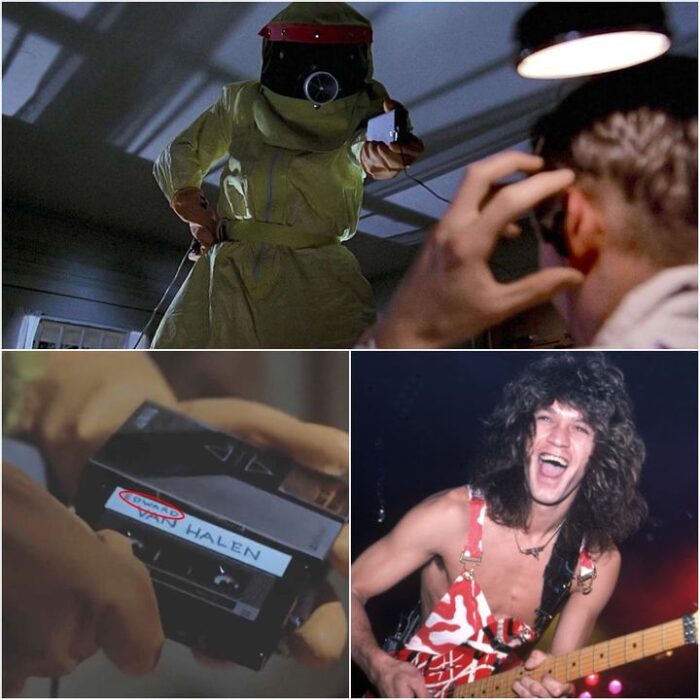
The blasting music Marty uses to fluster George is from a cassette labeled “Edward Van Halen.” Strangely, though, “Edward” appears to have been hastily written. Because it was! Van Halen, the band, declined to lend their music (or name) to movie production, but Eddie himself obliged, supplied the guitar riff – and kept it a secret until years later.
The Statler Staple of Hill Valley
Recall what the first line in Back to the Future was? Don’t worry if you don’t – it’s a seemingly irrelevant radio commercial for the Statler car dealership. Later, Marty eyeballs Statler’s new Toyota 4×4 – which he gets to own by the conclusion of the film.
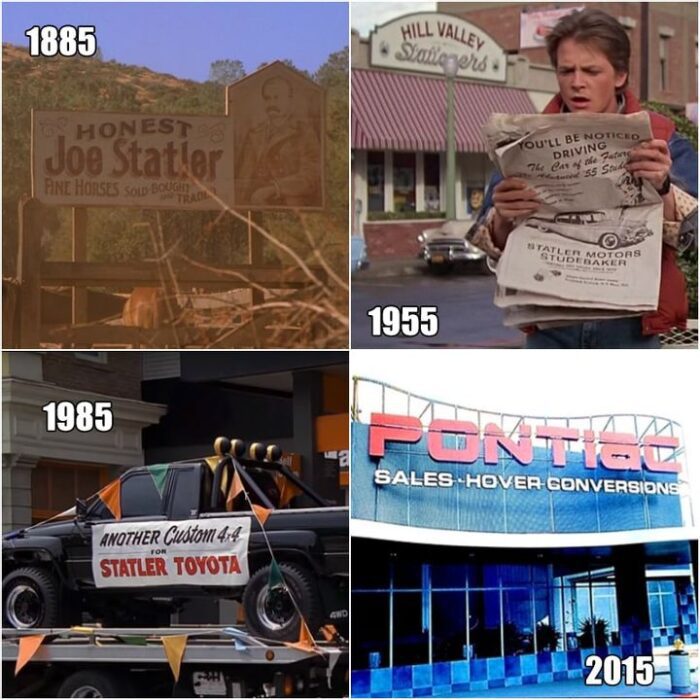
If you pay extra attention, though, you’ll see there’s a Statler selling some mode of transportation or another in every single Hill Valley Marty arrives in. In chronological order, it’s Honest Joe Statler’s Fine Horses in 1885, it’s Statler Studebaker in 1955, it’s Statler Toyota in 1985, and in 2015 it’s Statler Pontiac.
An Ode to 1950s Cartoons
Here’s a hidden fact that’s totally obscure, AND you had to stay through the credits to even see! When Marty travels back to 1955 in Part I, he smashes into Old Man Peabody’s barn – where he’s found by Peabody, his wife, and their two children.
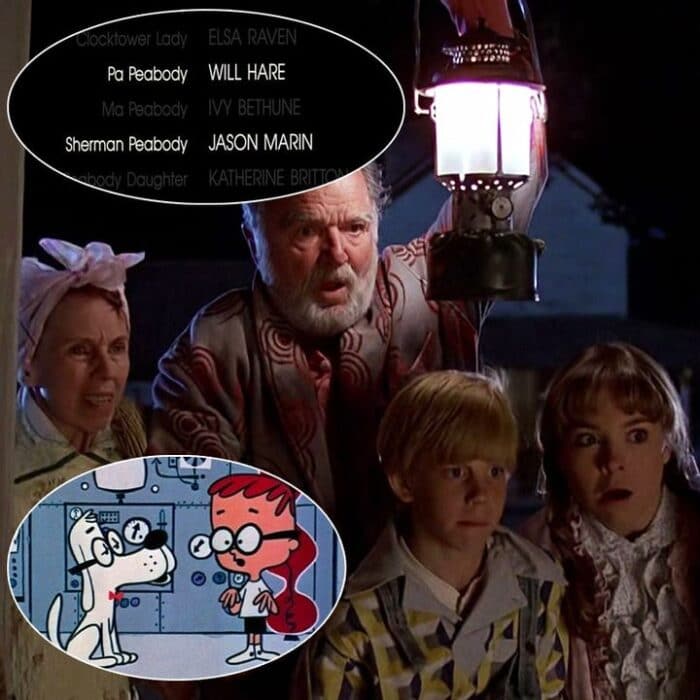
His son, who doesn’t have a name in the movie, thinks that Marty’s an alien. In the credits, he’s listed as Sherman. Yes, together they’re Peabody and Sherman – exactly like the time-traveling pair of a dog and his boy from the cartoon late-’50s The Rocky and Bullwinkle Show, who had their own film in 2014.
History Lesson in Frisbee
In Part III, Marty is speaking to his predecessors Seamus and Maggie McFly. Coincidentally, Maggie being portrayed by Lea Thompson, who also plays Marty’s mother Lorraine, doesn’t make much sense – Lorraine wouldn’t look like someone from her husband’s family.
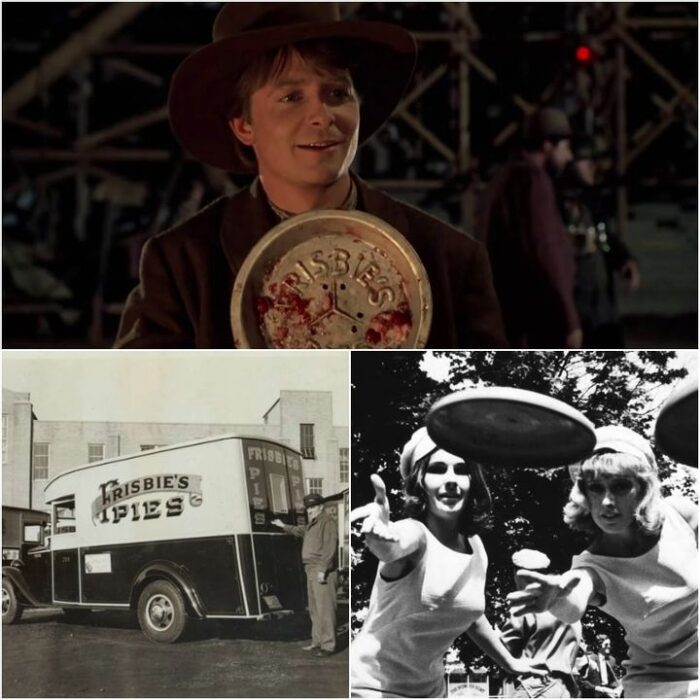
Regardless, in that scene, during the clock tower’s opening, Marty spots a pie tin saying Frisbie’s Pies. “Frisbee,” he says, “far out.” He goes on to use the tin as a Frisbee, but this wasn’t an accident. The game we recognize today got its name from this real pie company, whose tins were used in the first version of the game.
Future News, Read All About It!
When Marty arrives in 2015 during the first scenes of Part II, Doc Brown hands him a recent local edition of USA Today so he can read the story about his future son’s arrest after an altercation with future Biff. Look away from the primary story, though, and you’ll see all types of intriguing headlines.
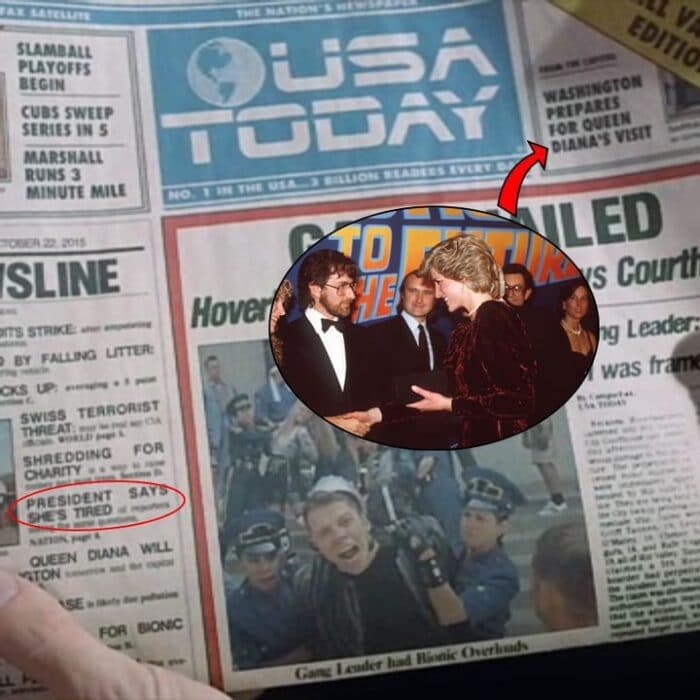
One reads “Thumb bandits strike,” presumably referring to criminals who lift other people’s thumbprints for the intention of identity theft. Other interesting ones include “Jaws without a bite” (Jaws 19 movie review), “President says she’s tired,” and, sadly, “Queen Diana will visit Washington.”
Subtle Shoutout to the History Fans
Back to the Future Part III has countless clever references, but one specifically seems to have been included for the filmmakers’ amusement– as we seriously doubt people in the audience understood it. After breaking his heart, Doc Brown enters the local bar to buy a drink.
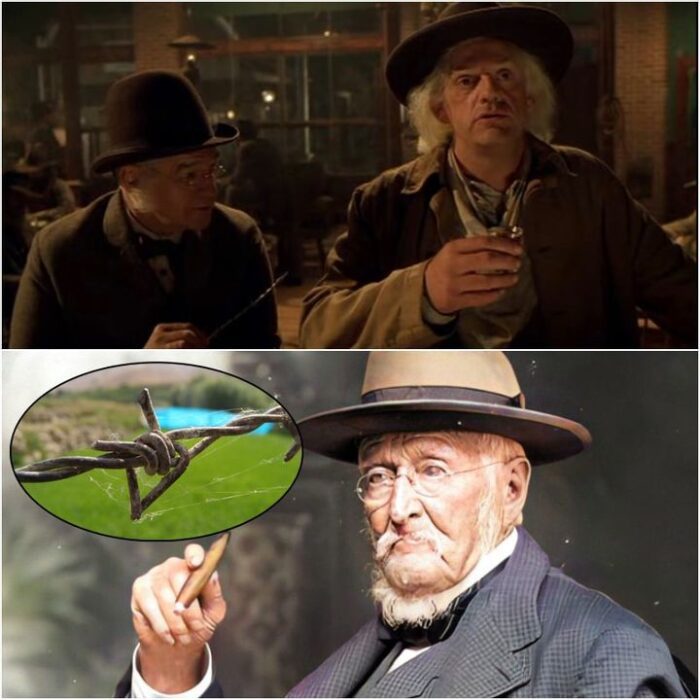
Then a random man approaches and offers some insightful advice while remarking he’s been selling his barbed wire across the country. Though not specifically named, the man’s obviously Joseph Glidden, the businessman who monopolized barbed wire in the 1870s and went on to become one of America’s wealthiest men as a result.
Evolution of the Ravine
Names are intentional in Back to the Future and regularly change to reflect numerous characters’ actions. The gorge near Hill Valley is the perfect example. In the original 1985 timeline, it’s called Clayton Ravine – after Clara Clayton, who fell into it in 1885. The ravine was formally called Shonash by Native Americans.
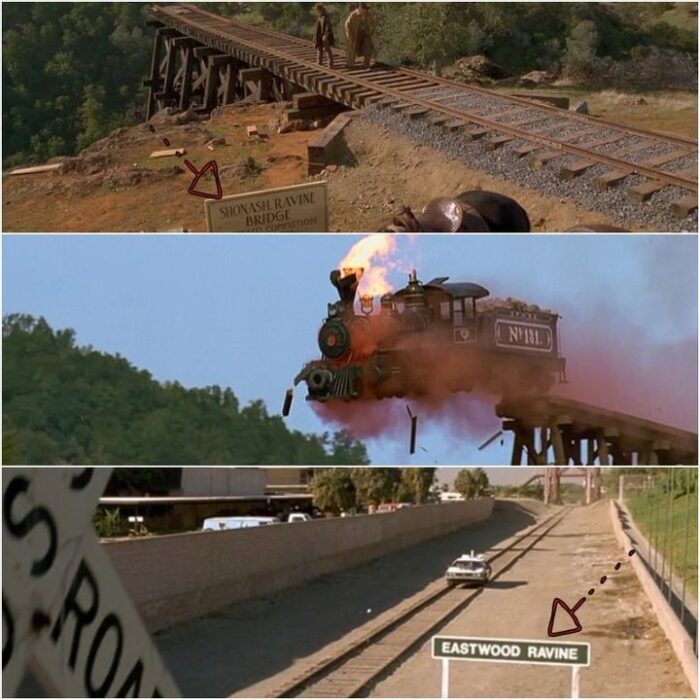
After what happened in Part III’s climax, though, we notice that it’s been renamed, mostly because Clara lives, so they don’t posthumously name it after her. Rather, it’s called Eastwood Ravine – after Marty’s pseudonym, and the guy Hill Valley’s residents believed died in the hijacked locomotive’s crash.
